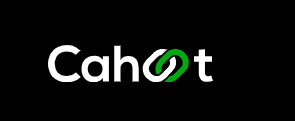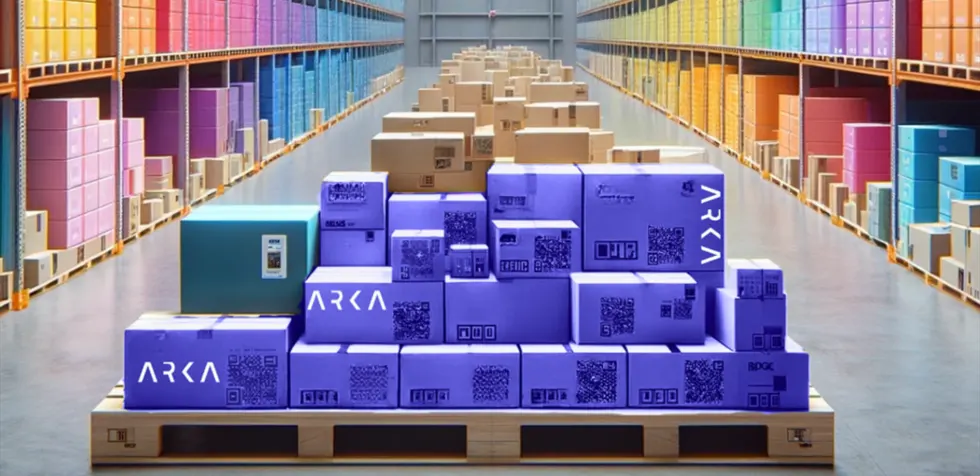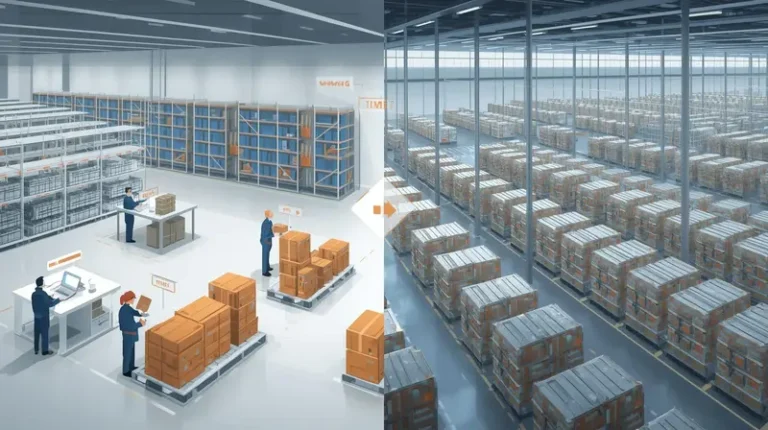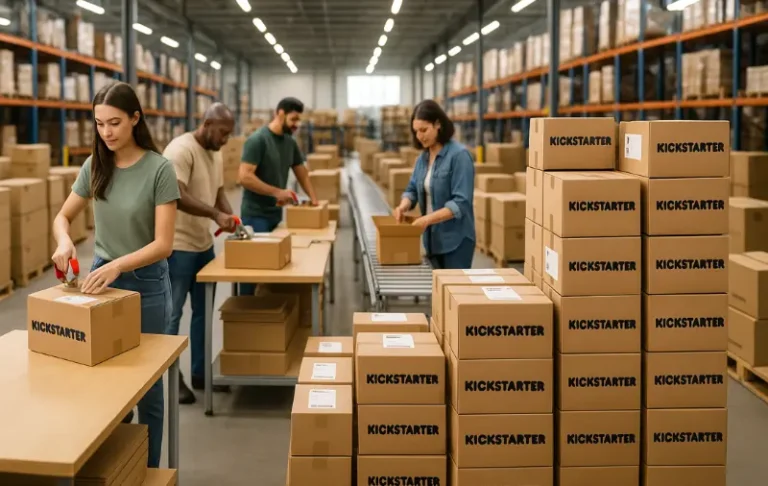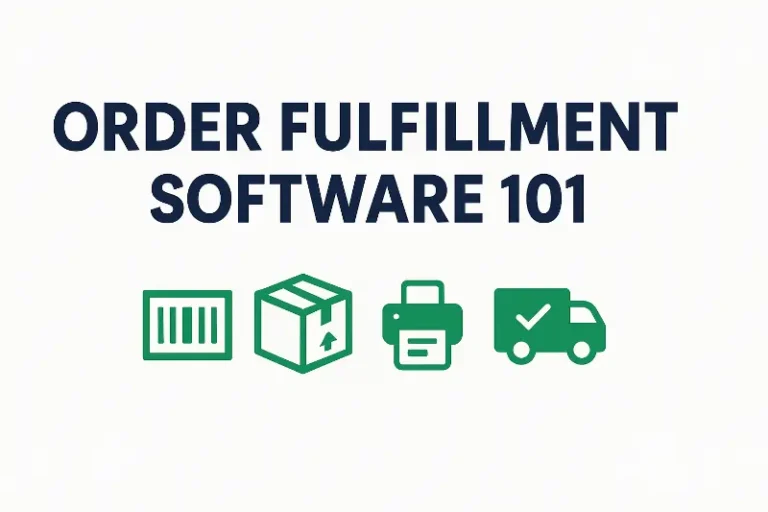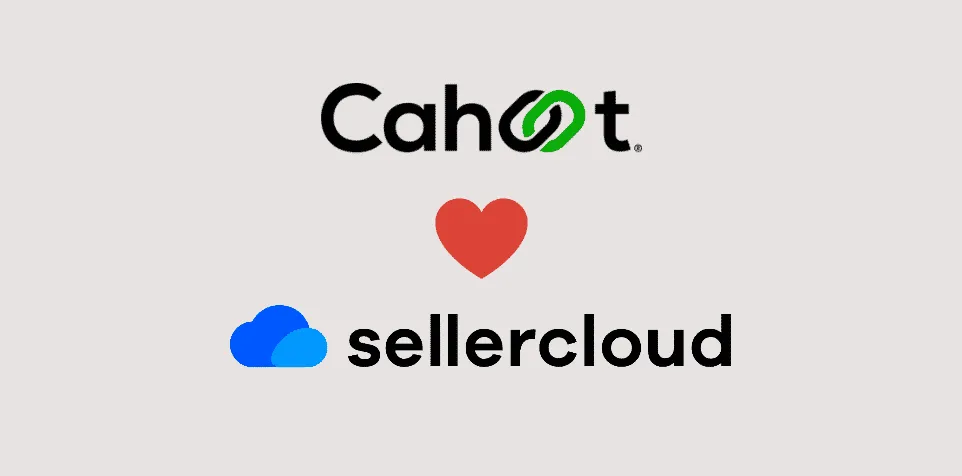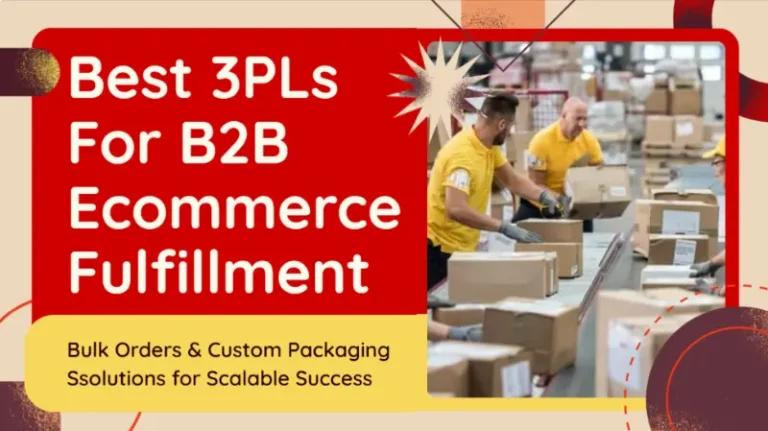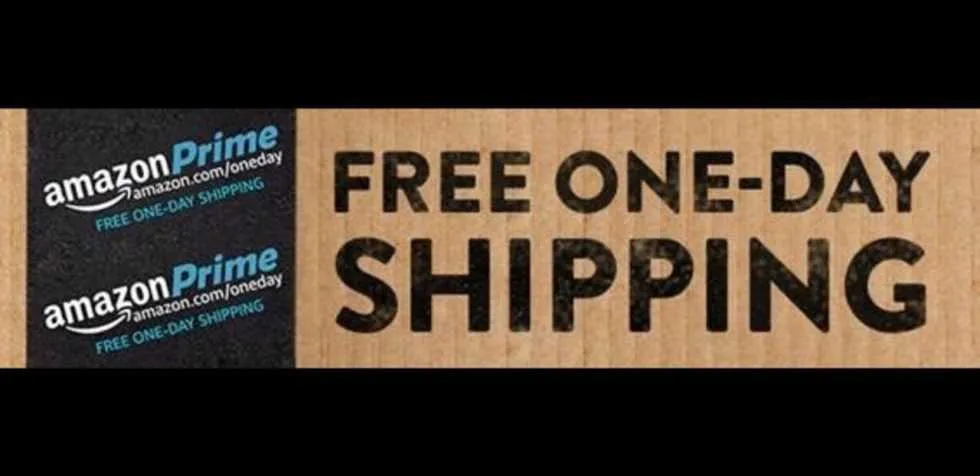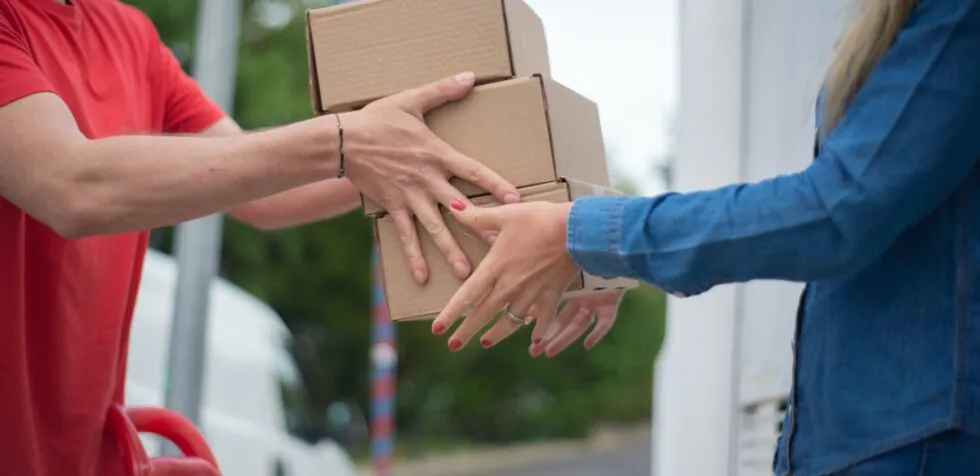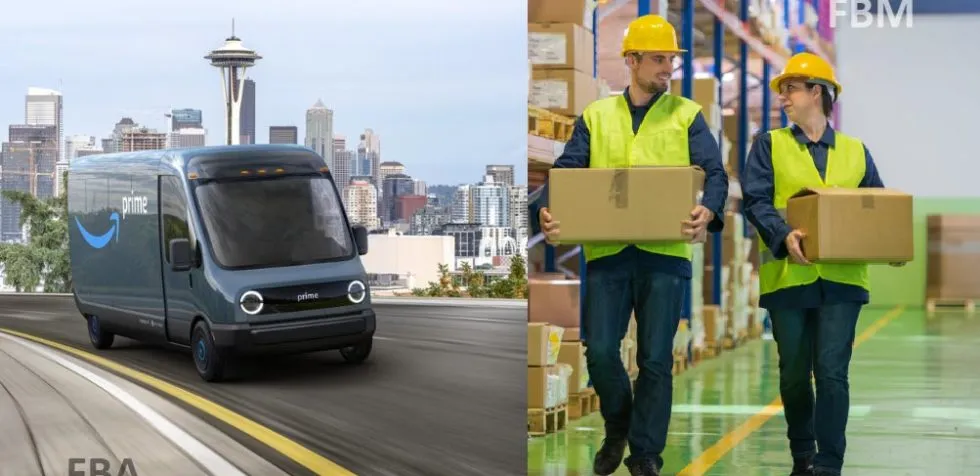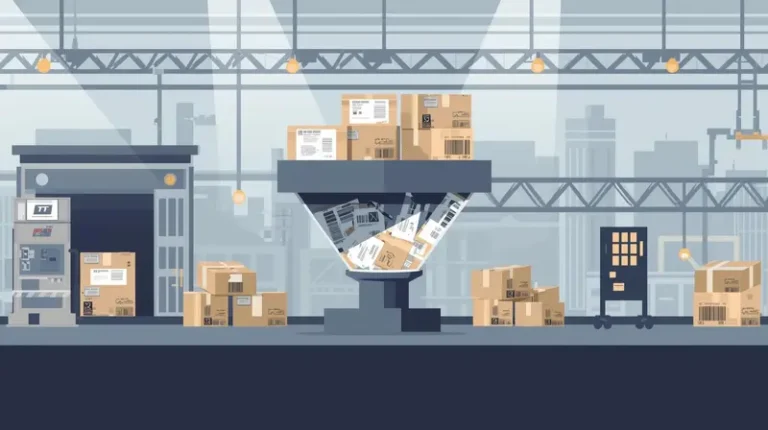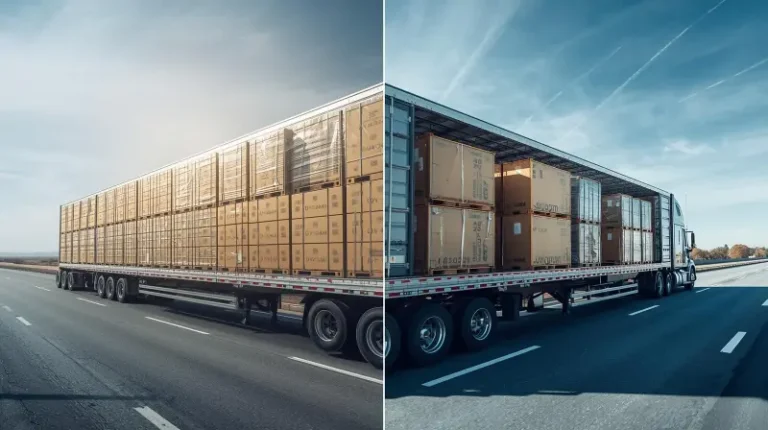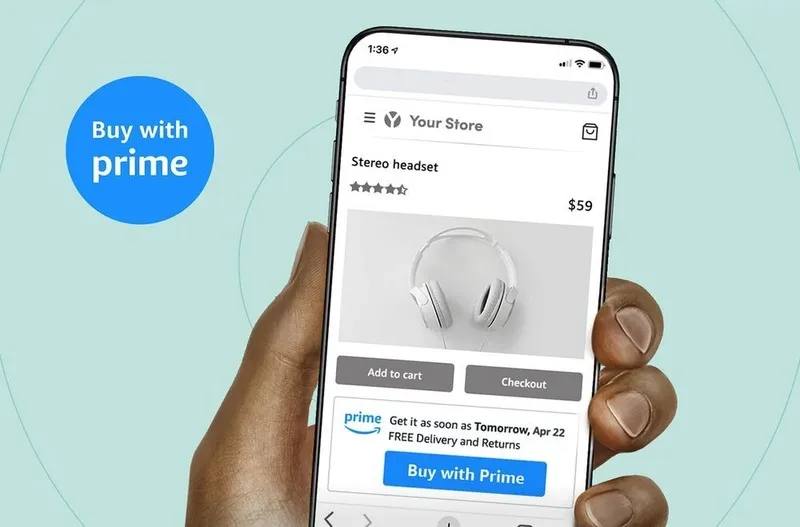Packaging Design That Will Make Fulfillment Easy and Cut Costs
Like anyone in the ecommerce world, small business owners are always looking for ways to streamline their operations and enhance the customer experience. A critical aspect that often gets overlooked is packaging design. It’s not just about making products look attractive; it’s about making smart, cost-effective choices that simplify the order fulfillment process and reduce packaging costs. This article will delve into innovative strategies that ecommerce businesses can employ to revolutionize their packaging approach, ultimately cutting down on supply chain expenses and boosting customer satisfaction.
Understanding the Impact of Packaging Materials Choices
The type of packaging chosen plays a pivotal role in the overall success of any ecommerce business. Whether it’s a sturdy cardboard box, a sleek mailer, or eco-friendly packaging, each element contributes significantly to the brand identity and customer unboxing experience. However, beyond the aesthetics, smart packaging design is about optimization and cost savings. It’s about selecting box sizes and packaging materials that not only protect products but also reduce shipping costs and carbon footprint, while shipping safely and efficiently.
What is Dunnage?
Dunnage is a crucial component in the shipping and logistics industry, playing a vital role in ensuring the safe transportation of goods. Dunnage materials come in various forms, including common dunnage materials like bubble wrap, kraft paper, corrugated paper, crisscrossed dunnage, and kit packs. These materials are essential in the shipping process as they provide a protective barrier that absorbs shocks and vibrations, ensuring that products reach their destination in perfect condition.
The type of dunnage used can vary depending on the specific needs of the shipment, such as wood, plastic, or custom designs. Understanding the different types of dunnage, from lightweight to heavy-duty options, is crucial for optimizing shipping safety and maintaining the integrity of shipments across industries.
Slash Your Fulfillment Costs by Up to 30%
Cut shipping expenses by 30% and boost profit with Cahoot's AI-optimized fulfillment services and modern tech —no overheads and no humans required!
I'm Interested in Saving Time and MoneyBenefits of Using Dunnage Materials
Dunnage offers numerous benefits to businesses and individuals involved in shipping and logistics. Some key advantages include:
- Damage Protection: Dunnage materials help prevent damage to goods during transit by absorbing shocks, vibrations, and impacts, which is particularly important for fragile items that are susceptible to breakage.
- Moisture Protection: Certain dunnage materials, such as corrugated paper, can protect goods from moisture damage during shipping. For products that are sensitive to humidity and water exposure, such as cosmetics, this is necessary to ensure successful delivery.
- Shock Absorption: Dunnage materials like bubble wrap and air pillows can absorb shocks and vibrations, reducing the risk of damage to fragile items and ensuring that products remain intact even when subjected to rough handling.
- Easy Handling of Heavy Items: Dunnage materials can make it easier to handle heavy items by filling gaps and preventing them from shifting during transport. This standard practice not only protects the goods but also simplifies the loading and unloading process.
- Air Circulation: Dunnage materials can improve air circulation in tightly packed shipping containers, reducing the risk of mold and mildew.
By incorporating dunnage materials into the shipping process, businesses can protect goods, reduce the risk of damage, and ensure that products arrive in excellent condition.
Optimizing Packaging Solutions
While packaging is often thought of as a cost center, innovative packaging solutions can minimize overall costs while also turning a necessary expense into an effective marketing tool.
Leveraging Sales Data for Efficient Packaging
One of the most effective ways to optimize packaging needs is by analyzing sales data. This can reveal the most common purchase combinations, allowing the opportunity to streamline inventory management and reduce the number of different shipping boxes required. By consolidating packaging options based on popular orders, simplifying the packing process while minimizing warehousing space and labor costs involved in handling too many packaging supplies.
Double-Sided Printing: A Packaging Game-Changer
Incorporating double-sided printing in packaging solutions can have a surprisingly significant impact on the bottom line. By printing product instructions or disclaimers on the inside of mailer boxes, sellers can eliminate the need for additional inserts. That not only saves on the cost of packaging materials like custom inserts and bubble wrap but also reduces the time-consuming task of including these extras during the packing process. It even enhances the customer experience by presenting all necessary information in a clear and convenient manner.
The Role of Custom Packaging and Damage Protection Dunnage
Custom packaging, while seemingly a luxury, can be a practical choice for ecommerce businesses focused on cost savings and sustainability. By choosing the right type of packaging, such as corrugated options or sustainable filler materials, significant reductions can be made in the dimensional weight of shipments. This directly impacts shipping rates, leading to substantial cost savings. Furthermore, custom dunnage tailored to specific product packaging needs can minimize product damage, thereby reducing the costs associated with returns and replacements.
Looking for a New 3PL? Start with this Free RFP Template
Cut weeks off your selection process. Avoid pitfalls. Get the only 3PL RFP checklist built for ecommerce brands, absolutely free.
Get My Free 3PL RFPUsing Product Returns Data to Optimize Packaging
Analyzing product returns data can be a game-changer for improving packaging design. Start by digging into the reasons customers list for returns—especially damage-related ones. Look for patterns: Are certain products being returned more often due to damage? Is there a specific packaging style linked to these returns? Sometimes, it’s as simple as noticing that fragile items packed in thin boxes are more prone to breakage, or that certain shapes of packaging don’t hold up well during shipping. Categorizing returns by product type, packaging material, and type of damage can help you pinpoint weak spots.
Once recurring issues are identified, test alternative packaging solutions. For example, if glass items are cracking despite bubble wrap, consider using molded foam inserts or sturdier boxes. Don’t forget to factor in shipping methods—if certain carriers handle packages more roughly, you might need to beef up protection even more. Over time, track if changes reduce damage-related returns. The goal is to strike a balance between cost-effective packaging and product safety, ultimately boosting customer satisfaction and cutting down on return-related losses.
Prioritizing Sustainability in Packaging Strategy
Sustainability is no longer just a buzzword; it’s a crucial aspect of modern business practices, especially in the packaging world. Opting for sustainable packaging not only aligns with the growing environmental consciousness of consumers but also contributes to cost-effectiveness. Materials like eco-friendly packaging, void fill, and recycled cardboard boxes reduce carbon footprint and often come with the added benefit of being lighter and less expensive. Alignment between business practices, social media trends, and consumer values also enhances brand identity and can lead to increased customer satisfaction and loyalty.

Reusable Packing Materials
Reusable packing materials are an essential aspect of dunnage, offering a cost-effective and environmentally friendly solution for businesses and individuals. Some common types of reusable packing materials include:
- Bubble Wrap: A popular choice for protecting fragile items, bubble wrap can be reused multiple times. Its cushioning properties make it ideal for safeguarding delicate products during transit.
- Kraft Paper: A versatile and affordable option, kraft paper can be crumpled, torn, or wrapped around items to provide medium protection. It is also biodegradable, making it an eco-friendly choice.
- Corrugated Paper: A high-tech option, corrugated paper can carry a wide range of weights and provide sustainable packaging solutions. Its strength and durability make it suitable for various applications.
- Dunnage Bags: Large, inflatable bags used to keep cargo from shifting or colliding with other cargo during shipping. These bags are reusable and can be easily inflated and deflated as needed.
- Packing Peanuts: An eco-friendly and versatile dunnage material that can be packed around irregularly-shaped goods. They provide excellent cushioning and can be reused multiple times.
By using reusable packing materials, businesses and individuals can reduce waste, save costs, and minimize their environmental impact. These materials not only offer effective protection for goods but also contribute to a more sustainable shipping process.
Scale Faster with the World’s First Peer-to-Peer Fulfillment Network
Tap into a nationwide network of high-performance partner warehouses — expand capacity, cut shipping costs, and reach customers 1–2 days faster.
Explore Fulfillment NetworkAutomation and Optimization: The Future of Packaging
The future of packaging in ecommerce lies in the intelligent use of automation and optimization techniques. By automating certain aspects of the packaging process, such as filler placement or box sealing within a shipping container, ecommerce businesses can achieve faster fulfillment services and reduce labor costs. Additionally, ongoing optimization of packaging strategies, informed by data analytics and customer feedback, ensures that all packaging solutions evolve with any business, always meeting the changing demands of the market and the seller’s specific packaging needs.
In Conclusion
Effective packaging design is a multi-faceted strategy that goes beyond mere aesthetics. It’s a combination of data-driven decision-making, custom solutions, sustainability considerations, and the smart use of technology. By focusing on these areas, small ecommerce brands can significantly reduce their packaging and shipping costs while enhancing the overall customer experience. The result is bigger margins, faster growth, and new opportunities.
Phillip Akhzar, Founder & CEO, Arka
Frequently Asked Questions
How do I know what kind of dunnage to use?
Choosing the right dunnage for your packaging comes down to balancing product protection, cost-efficiency, and sustainability. Here’s a simple framework to guide your decision:
- Assess Product Fragility and Weight: Fragile items (like glass or electronics) need cushioning materials such as bubble wrap, foam inserts, or molded pulp to absorb shocks, while heavy products require sturdy dunnage like corrugated inserts or molded foam that won’t collapse under weight. Light, non-fragile items can use simpler void-fill materials like kraft paper or air pillows.
- Factor in Packaging Efficiency: Space matters! In small packages, use dunnage that minimizes movement without wasting space—custom inserts or snug-fitting foam work well. For multi-item shipments, dividers or molded trays keep products separated and secure.
- Weigh Cost vs. Sustainability: Air pillows and bubble wrap are affordable but less eco-friendly unless you opt for recyclable versions. Kraft paper and molded pulp are biodegradable and a solid choice for eco-conscious brands. If you’re shipping high-value goods regularly, investing in reusable dunnage like foam inserts or corrugated plastic dividers can cut costs over time.
In short, the right dunnage keeps your product safe, controls shipping costs, and aligns with your brand’s sustainability goals.
What is the best dunnage for small packages?
The best dunnage for small packages depends on the product’s fragility, weight, and shipping conditions. For the best results, match the dunnage to the product’s needs. Fragile items benefit from cushioning materials like foam or bubble wrap, while sturdier items might only need air pillows or paper to prevent movement. Always ensure there’s minimal empty space in the box to reduce the risk of damage.
How can I keep track of my shipping supplies, such as dunnage?
To effectively track shipping supplies like dunnage, use an inventory management system (whether robust software or a simple spreadsheet) for monitoring stock levels, usage rates, and reorder points. Categorize dunnage types (e.g., bubble wrap, air pillows, kraft paper) and create standard “recipes” for each product to predict material needs. Integrate tracking with your order management system to align usage with sales volume and set minimum stock thresholds to trigger reorders. Regular physical audits help catch discrepancies, while analyzing usage trends over time can reveal seasonal patterns or inefficiencies. For larger operations, using barcodes or QR codes streamlines tracking and reduces manual errors, ultimately helping control costs and improve packaging efficiency.
Turn Returns Into New Revenue
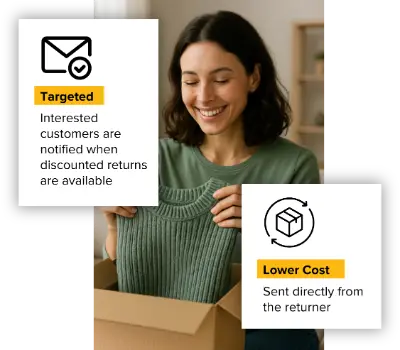
Amazon Buy With Prime: A Game-Changer for Customers, But a Trojan Horse for Merchants
In this article
 20 minutes
20 minutes
Podcast: Ecommerce Wizards Podcast – What is Amazon’s Buy With Prime Button?
Guillaume Le Tual, host of the E-Commerce Wizards Podcast, interviews Manish Chowdhary, CEO of Cahoot, about Amazon Buy With Prime. The service allows merchants to install the Amazon Prime button on their product page, shopping cart, and checkout. Customers can then log in to their Amazon Prime account to check out and receive one or two-day free shipping, free returns, and no minimums. For customers, it’s a great service, but for ecommerce merchants, it’s a Trojan Horse. Amazon Prime circumvents the entire order checkout process from the merchant’s platform, and payment processing goes through Amazon, which also collects data about the customer and charges the seller for order fulfillment. While Amazon FBA can be a benefit for merchants who lack a strong shipping distribution system, there’s also a cost of 15% that some merchants say is too high to make a profit. Amazon Prime service is a big deal for merchants because it can replace their whole checkout experience and be a disadvantage for them.
Guillaume:
Hello, everyone. Guillaume Le Tual here, host of the E-Commerce Wizards Podcast, where I feature leaders in e-commerce and business.
Today, for a second time, our guest is Manish Chowdhary, who’s the CEO of Cahoot. And we’re going to have a chat together about what is Amazon Buy With Prime.
Speaker 3:
This episode is brought to you by MageMontreal. If a business wants a powerful e-commerce online store that will increase their sales, or to move piled up inventory to free up cash reserves, or to automate business processes to reduce human processing errors, our company, MageMontreal, can do that. We’ve been helping e-commerce stores for over a decade.
Here’s the catch. We’re specialized and only work on the Adobe Magento e-commerce platform, also known as Adobe Commerce. We’re among only a handful of certified companies in Canada. We do everything Magento-related.
If you know someone who needs design, support, training, maintenance, or a new e-commerce website, email our team at support@magemontreal.com, or go to magemontreal.com. That’s M-A-G-E montreal.com.
Guillaume:
So Manish, thanks for being here for a second recording.
Manish:
Thank you for having me, Guillaume. Thank you very much.
Slash Your Fulfillment Costs by Up to 30%
Cut shipping expenses by 30% and boost profit with Cahoot's AI-optimized fulfillment services and modern tech —no overheads and no humans required!
I'm Interested in Saving Time and MoneyGuillaume:
All right, can you enlighten us? What is, first of all, Amazon Buy With Prime?
Manish:
Amazon Buy With Prime is the Amazon’s mission to dominate the world, as it always does. But let’s break it down.
What Amazon Buy With Prime is, it’s essentially an option for websites outside of Amazon to install the familiar Amazon Prime button on the product page, in their shopping cart and checkout. So the user, instead of checking out through your native platform’s shopping cart and checkout, you can check out by logging into your Amazon Prime account, as you would on your Amazon.com website.
And as a result of that, you will get all the benefits of Amazon Prime, which is one or two-day free shipping, free returns, and also there’s no minimum and so on. So you log in, and you check out using Amazon, and then Amazon will ship the item to you from its FBA, Fulfillment by Amazon Warehouse, and you’ll get it in one or two days.
So great service for the consumer, but of course, not so great for the sellers, which I can talk about further.
Guillaume:
Yes, exactly. From an entrepreneurship and business point of view, it’s like, oh, big red flags here showing up. So, okay, what do you see as a red flag for merchants here?
Manish:
Right. So for the merchants, for the sellers, I call Amazon Buy With Prime a Trojan Horse. It’s essentially, what Amazon did with its AWS, the web services or the hosting division, they started using the web hosting for themselves. And then they converted that into a mass service that we all, many of us use, Amazon’s Web Hosting Services.
So this is Amazon’s attempt to basically get into the 3PL, the order fulfillment world. They built the Amazon FBA for themselves, for products that are sold on Amazon, and now they’re opening this up to the larger internet. So if you are selling on your own website, how can Amazon participate and get a share of that wallet from your website, because they have 150 million subscribers? But essentially, what Buy With Prime is doing is essentially encapsulating three different Amazon services into one, which is Amazon Advertising, Amazon FBA, Fulfillment by Amazon, and Amazon Payment.
So essentially, when the user checks out using the Buy With Prime, it completely circumvents the entire checkout process from the platform, and it basically puts payment processing with Amazon. And then, of course, Amazon collects all the rich data about the customer. What are you buying? When are you buying? And also, Amazon gets to charge the sellers for order fulfillment.
And so, this is a very, very attractive service for the consumer. But of course, for the seller, it creates a lot of challenges. And I can continue to elaborate, but basically, it’s a Trojan Horse and there are lots of disadvantages for the sellers, and there are some advantages as well, to be fair.
Guillaume:
Yeah. I like your term, Trojan Horse, and it is a powerful move from Amazon. You can see, for example, Shopify CEO, that will slip up about this at first and say, “Yeah, yeah, we’ll do it.” And then they will backtrack on this, and say, “No way,” because it would replace Shop Pay, which is one of the competitive advantage of Shopify.
So, it is a big deal for a merchant to have your whole checkout experience totally replaced by Amazon. So yes, on the positive side, if you don’t have a strong distribution system already in place, having Amazon FBA, Fulfilled by Amazon, can be a strong benefit. But also, there’s a cost to this, and the cost is not always the best.
I know some merchants that say, “If I sell myself and I fulfill myself, I make money. If I use FBA, well, it’s not worth the trouble anymore. I don’t make much money anymore.” You know? So there’s that aspect, about the extra 15%, it can make a difference. For the merchant, cost will not be zero to fulfill themself, obviously. But that 15% sometimes is too much for merchant, that it doesn’t make it worth it for them to run the business if all the sales will come into that channel, with FBA.
Also, you give up a lot of your control. That order is going to go into Amazon. How much control do you retain personally as a merchant over this transaction? How much information do you have about the customer? How much customer service do you need to do? And so on. Perhaps you can elaborate a little bit on that aspect.
Looking for a New 3PL? Start with this Free RFP Template
Cut weeks off your selection process. Avoid pitfalls. Get the only 3PL RFP checklist built for ecommerce brands, absolutely free.
Get My Free 3PL RFPManish:
Absolutely. All good points, Guillaume. But even beyond that, Buy With Prime infiltrates the entire customer journey from discovery, conversion, post purchase, which includes fulfillment as you said, and the repeat purchase. And I’ll give you some example for each one.
Discovery is essentially, Amazon, you would install a familiar Buy With Prime, the blue Amazon Prime, with the swoosh, the very familiar icon that we know. So now, that will get installed, say, right below your Add to Cart button, if you’re on a Magento site, for example. And so, just imagine the button itself on your site is a reminder for the customer to go check out Amazon, because you’re putting Amazon branding on your product details page and so on. So the Amazon, even if you acquired this traffic and brought it to your website, now the customer is being potentially invited to go, reminded of their Prime membership, so that they can possibly go on Amazon and compare prices and so on. So that could lead to siphoning of traffic. That’s one.
On the conversion side, most ecommerce brands, most websites, retailers, like to encourage larger shopping carts. We know that on your DTC website, most brands have free shipping on orders over, say, $49. So, it’s not free-free for buying a toothpick or buying a toothbrush, but that’s what you get with Amazon Prime.
Amazon Prime does not have those limits. So if you’re a Prime member, the people could actually, this could lead to lower cart size on your DTC site, as opposed to encouraging a larger cart. That’s the conversion part.
And then, let’s say you add the item to the shopping cart and you abandon the cart. We know that 85% of the Amazon Prime members visit Amazon.com at least once a week, and 45% of them make a purchase, a transaction, once a week. That’s a very high repeat loyalty that these Amazon Prime subscribers have to Amazon. And part of it is because they’ve paid $139, $140 annual membership, so they want to exploit that.
But imagine somebody added the item to the shopping cart and they didn’t check out. Now, it’ll be very difficult for the brand to re-market to this customer. And if they hop over to Amazon once a week, they might be targeted with the ads of another product that competes with this product. And you are the one who helped add that item to the cart in the first place.
So, those are some of the challenges on the order fulfillment side to continue with that school of thought. The product is going to come in an Amazon branded box. We’ve all seen the familiar Prime tape that goes on the brown box, with Amazon advertising. So, you bought the item from this DTC brand that’s looking to promote its ecommerce brand, its value proposition to the customer. But the customer is being reminded of Amazon every step of the way. And so, that is not very good.
And then finally, on the repeat purchase, the customers are more likely to go back to Amazon. And if you are selling on Amazon, you’ll have to not pay anywhere between that eight to 20% commission. So there are many aspects of it is not so enticing for the seller. And of course, there are some advantages which I can cover as well, Guillaume, to be fair.
Guillaume:
We’ll cover after. I think we’re not done with the downsides, quite frankly, which to me is way larger than the upside. Because if you want to use Amazon’s email, FBA or whatever, fulfillment services and so on, well, you can just list your product on the marketplace.
Also, Amazon’s fees, the normal fees plus the fees for fulfillment, they are fair when Amazon is bringing you the customer. And it’s the reason why you want to put your products on the marketplace in the first place, because Amazon is going to bring you traffic, going to bring new customers there.
But if you paid for the customers yourself separately, maybe with your own Google Ads, your own marketing efforts and so on, and then you’re still going to pay all those costs and send over the customer to Amazon, and then you sort of lose traction. And I really like your other point. What if the customer does not buy right away? It happens. You add stuff to cart, you don’t finish, get interrupted, kids calling you, whatever. You come back, and then you’re going to see ads and similar product, maybe cheaper on Amazon. It is really a Trojan Horse. From my point of view, it is a really big mistake from business point of view.
I am all for selling on marketplaces like Amazon. Do it. Go for it if it makes sense for your business. It’s a good idea. But your own website, your own .com or whatever, is a separate thing, is a way to diversify. So, you do not want to tie it even more to Amazon. And Amazon is just trying to take buys more and more into what it currently does not control.
It would prefer that all transaction worldwide goes on Amazon, and they don’t currently control all those independent websites. Now, that’s one way to sort of control them, to a great extent. So, I see more negative than positive. But let’s go with the positive. Let’s be fair. So, what’s the positive?
Manish:
Well, positive is, if you have a website, an ecommerce brand that’s not very well-known, and you don’t have a lot of customer trust, Amazon Prime button can install that trust. It’s sort of like many websites that I don’t want to check out and provide my credit card information to that website, because maybe I don’t have trust.
And that is how PayPal gained prominence in the first place. People love checking out through PayPal. And consumers, of course, we all want that free one-day, two-day delivery. So, if the brand does not have the ability, if the seller’s not utilizing services like Cahoot, it would be very difficult for them to offer that level of service.
So, this would be a great way for them to get traction, if they don’t want to take any hassle with fulfillment, operations and logistics, and even customer care. Because remember, as part of the Prime purchase, you’re also delegating a lot of your customer service to Amazon. So, whether it’s a good thing or a bad thing. But that’s certainly like, I’ll give you an example, and we actually did the study.
So the Skullcandy, you’re probably familiar, it’s a very popular headphones brand, very popular with gamers. And they’re selling a product that, let’s say they’re offering four to seven-day delivery, which is what we found when we checked their website, when we did the study about a few months ago, in the summer.
And then another company called Razer, which is an up and coming brand, and if they installed Buy With Prime, and both the products are priced equally, as a consumer you might be motivated to check out through Buy With Prime on Razer.
So in the absence of date certain shipping, let’s say I have a birthday party, I need to buy a gift and I need to have it arrive by Saturday. Today is Thursday. So, my options are very limited. So it can be quite advantageous in those cases for the people who don’t want to fully outsource fulfillment to FBA.
And just to add to that, by the way, the cost of fulfilling orders with Amazon through Buy With Prime is not the same as if the order arrived on Amazon.com. Because Amazon makes the 15, whatever, 15% commission on those, they will not make that commission on these orders. And therefore, these orders will be classified as multichannel order fulfillment.
And we know that if you try to get a Magento order Fulfilled By Amazon (FBA), you pay more. So it’s not the same low price that if the order originated on Amazon. And we’ve done some calculation, in many cases, it works out to be 51% more expensive to do multichannel fulfillment. And of course, if you want the map, there’s tons of webinars on our Cahoot.ai, on the Resources section. Check out or contact us, we’ll be happy to elaborate on that multichannel fulfillment.
Guillaume:
And just to clarify it, so you’re saying that 51%, just to be sure I understood it well. So 51% more expensive from multichannel fulfillment if you send the order then to Amazon, so if it came from your on e-commerce store, is that what you’re saying?
Manish:
That’s right. Because, let’s say, you’re selling socks. I have black socks and I have red socks. And Amazon FBA, routine FBA will cost you $4 and 22 cents. But if I send Amazon that order from Magento to fulfill, it’ll cost me $6 and 31 cents to ship the same identical item. The only difference is this is a Magento order versus an Amazon.com order.
Now further, let’s say a customer buys a pair of black socks and a pair of red socks. Amazon treats them as two unique items. They don’t put them all together. What’s the composite weight? The weight of the items, the two pairs of socks, is not going to be different. You’ll pay double because you’re paying 4.22 for one pair, you’ll pay $8 and 44 cents for two pairs of socks. And if it was a multichannel, if it was a Magento order, it’ll be $12 and 74 cents. That’s how we arrived at the 51% more expensive amount.
Guillaume:
Okay. So, it is not optimized in the merchant’s favor for cost saving and bundling boxes and so on, because actually Amazon will typically ship to you in all separate boxes as fast as it can. But somebody’s paying for all this, this, quote, unquote, free shipping. The merchant’s paying for it.
Manish:
Well, that is just the way Amazon’s pricing model. So the product may still arrive in the same box, but the way how FBA prices its services, it does not. It simply looks at a price, flat price per item. Per item. Now it does not take the weight into consideration.
So FBA, especially multichannel fulfillment through FBA, becomes quite pricey when you have larger number of units per order. So, if you’re a apparel ecommerce brand, if they try to do multichannel order fulfillment, let’s say you have a Magento store or a Shopify store, and you want to get those orders fulfilled through FBA, the cost will add up and it becomes quite expensive. Because apparel, and certain product categories, lend themselves for larger number of units, average number of units per order.
Guillaume:
Okay. All right. Okay, thanks for that clarification. Is there anything else that people should know about the Amazon Buy With Prime?
Scale Faster with the World’s First Peer-to-Peer Fulfillment Network
Tap into a nationwide network of high-performance partner warehouses — expand capacity, cut shipping costs, and reach customers 1–2 days faster.
Explore Fulfillment NetworkManish:
I think you covered it. Shopify has banned it. Shopify, they’ve openly come out and say that this is against the Terms of Service, and you’ll get a big warning if you’re a Shopify merchant.
It’s still a By-invitation Only program. We know a little about it so far. So, I think merchants should… Essentially, this is a call to action for brands and retailers, that faster shipping, the two-day shipping, it used to be an Amazon thing. Now it’s going to be an internet thing. It is what’s expected from you.
So I would encourage brands and retailers to look at their order fulfillment strategy, their operation strategy. You don’t need to go build tens of warehouses. That’s very expensive. In fact, right now, the warehouse rents are at all-time high, Guillaume, all-time high. And the vacancy is an all-time low. So even if you wanted to go and look for warehouses in California, or the West Coast of the US, you can’t find them.
If you find them, you’re going to have to sign a multi-year lease. You’re going to have to make a very large capital investment. It’s like the days of, you know, we no longer see competitive advantage in owning servers in the age of cloud computing.
So order fulfillment is going through a similar transition, that services like Cahoot are democratizing that service. And in fact, if you have excess capacity in your warehouse, we encourage you to come apply at Cahoot.ai, to join as a fulfillment partner.
So this is my recommendation for brands and retailers, to not take delivery and shipping lightly. In fact, we have a saying internally in our circles, that half your shopping experience is now your shipping experience. So, you got to really think of it from a customer experience standpoint.
Guillaume:
Yes. Okay. And I think this is pretty good coverage for Amazon Buy With Prime. It can be seductive for some consumers to check out at equal price point and so on. I’m going to benefit from that checkout experience. But you can compete with it, no matter the size of the merchant. It’s more a question of, can you deliver quickly? Can you write the date of arrival on your own website?
And of course, inviting Amazon on your own .com is, generally speaking, a very bad idea as a business move. It should be a diversification, unless it’s sort of a mini site that you more or less don’t care about. That is just a marketing site that is there to drive traffic, a bit like some brands have a lot of mini sites, and blogs, and so on that just drive traffic to a store. Then, if that’s the role of your small e-commerce store, that would be perfectly fine.
But if it’s your real, branded e-commerce store that you care to build a brand and brand value, I would not invite Amazon, as much as possible, on that site. I think it’s a bad business move.
So, that’s it. Well, Manish, thank you for this discussion. If people want to get in touch with you, what’s the best way?
Manish:
Well, hop over to www.cahoot.ai. That’s singular. And fill out the Contact Us form. I would love to chat with you.
And you can also find me on LinkedIn. Just Google, well LinkedIn, my name. Search my name on LinkedIn, with Cahoot, and I will personally respond to you.
So I’d love to chat with merchants, brands, retailers. Because there’s much to learn from practitioners, as much as we know about logistics, and share stories and try to find a better way to do business, that puts more money in the pockets of the business owners.
Guillaume:
All right. Well, Manish, thank you for being here today.
Manish:
Thank you for having me.

Turn Returns Into New Revenue

Sellercloud Partners with Cahoot to Power Amazon-like Fulfillment
Cahoot has just announced a partnership and integration with Sellercloud so that users of the two solutions can enjoy seamless information sharing and complete data visibility across both platforms. Sellercloud and Cahoot together make multichannel selling easier for merchants by helping brands and retailers convert better by enabling Amazon-like free and fast delivery for shoppers across all channels. With the new native integration, sellers will enjoy powerful listing, products, order and inventory management from Sellercloud along with fast, efficient fulfillment and logistics from Cahoot.
Cahoot Founder and CEO, Manish Chowdhary explained the power of the partnership: “Brands and retailers are finding it increasingly hard to compete and grow profitably on marketplaces because consumers want an Amazon-like experience. However, achieving this is really hard for merchants who operate in slim margins. Together, Cahoot and Sellercloud make the task easier for sellers. With our integration, sellers can now optimize their strategy everywhere they sell, from product listings, pricing, inventory to next-level fulfillment and logistics. Sellers now have all of the data and insights they need to make fast and smart data-driven decisions.”
Moving Fulfillment from Cost Center to Profitable Growth Opportunity
Cahoot offers fulfillment services to online sellers who want to turn their operations from a cost center to a profitable growth lever. With its large and rapidly growing network of facilities nationwide, Cahoot is a preferred choice of sellers on marketplaces such as Amazon, Walmart, and eBay and ecommerce platforms such as Shopify, Magento, and BigCommerce. Cahoot transforms ecommerce order fulfillment from a headache into a fast, reliable, and affordable growth lever. Merchants win more customers with fast shipping, all while paying less for fulfillment thanks to Cahoot’s patented business model and innovative technology.
“Sellercloud is always looking for ways to help our sellers improve their customer experience, so we’re excited to partner with Cahoot. Cahoot’s innovative technology and proven ability to power affordable, fast fulfillment across all channels will help our sellers grow faster.” said Shelly Boisvert, VAR Partner Development Manager of Sellercloud
Sellercloud’s mission is to provide merchants with tools that empower them to compete and win in today’s highly competitive landscape. Its products span a comprehensive range of features to help multi-channel sellers manage their ecommerce business in one streamlined and powerful tool. With Sellercloud, merchants can consolidate catalog and inventory management, push changes from one place out to multiple channels, make smarter purchasing decisions, and more.
Make Returns Profitable, Yes!
Cut shipping and processing costs by 70% with our patented peer-to-peer returns solution. 4x faster than traditional returns.
See How It WorksGrowing Fearlessly Without Adding Complexity
Sellers that enjoy success on one channel often find themselves challenged to replicate that success on new ones due to the exponential increase in business complexity. Solutions like Cahoot and Sellercloud are designed to keep the back-office simple so merchants can easily expand and grow on new sales channels.
For most sellers, adding channels increases managerial complexity and puts additional strain on operations. Unlike other fulfillment providers, Cahoot is built specifically to enable sellers to scale fearlessly across channels as diverse as Seller Fulfilled Prime and B2B retail replenishment. No other 3PL can handle such a wide variety of use cases or do so at the high level that Cahoot does.
Sellercloud and Cahoot teamed up to enable a joint customer, Healthyline, to exploit many growth opportunities at once without being overwhelmed.
“We have ambitious growth goals for our own DTC site and in physical retail all at the same time. Using Cahoot and Sellercloud together gives us a powerful solution for managing all our channels” said Kristof Hommonai of Healthyline. He continued, “Before Cahoot, we were considering signing contracts with multiple 3PLs to put together a comprehensive nationwide solution for Amazon SFP. It was extremely complicated, expensive and we would have had to still find new technology to glue them all together. Consolidating with Cahoot helped us grow triple digits last holiday season and they’ve saved us money. We are now ready to offer the same Prime-like guaranteed fast delivery on all our channels.”
Cahoot is available for merchants looking to increase their online sales with affordable, fast delivery services across all popular selling channels, including Amazon, Walmart, eBay, Shopify, BigCommerce, and more.
ABOUT CAHOOT
Cahoot is the world’s first peer-to-peer eCommerce fulfillment network. The innovative Cahoot network enables online merchants to offer nationwide 1-day and 2-day deliveries at costs lower than what they’re paying for standard shipping today. Its best-in-class fulfillment software and highly vetted fulfillment partners combine to offer one of the highest SLAs in the industry, including late order cutoffs, fast receiving, and >99.95% on-time shipping. Through Cahoot, merchants help other merchants grow with the power of Amazon-like fulfillment on all channels.
ABOUT SELLERCLOUD
Sellercloud provides robust tools that can meet all of your operational needs – inventory and warehouse management, publishing listings to marketplaces, order processing, shipping, and even reporting. Sellercloud help e-commerce merchants optimize their operational workflow and focus on efficiency and growth. Founded in 2010, Sellercloud has 600+ clients, 2000+ Amazon and eBay accounts, employs 90 staff and is headquartered in Lakewood, New Jersey.

Turn Returns Into New Revenue

For Prime 1-Day Shipping, Amazon Wants Sellers to Send It More Stuff
In this article
Amazon is offering steep discounts of up to 75% on warehouse storage fees to incentivize merchants to store more of their popular products with the company, in an effort to facilitate its transition to a one-day shipping standard for Prime members, according to CNET.
The promotion will begin in June and run through January; to qualify, sellers will need to have sold 60 or more of a product per month or have products specifically selected by Amazon. They’ll also have to keep the level of inventory they supply to Amazon at a certain level.
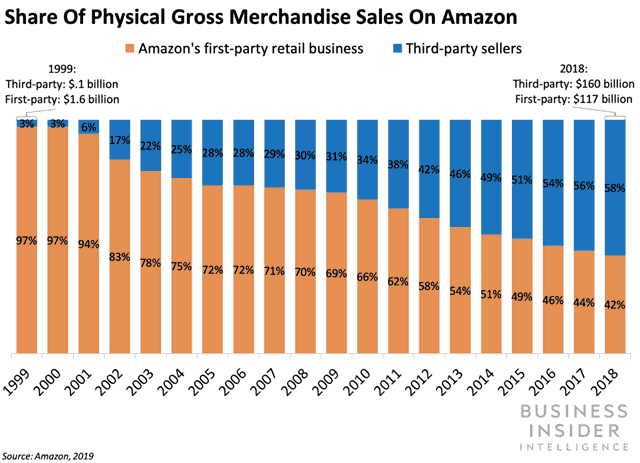
Here’s what it means: The push for one-day free shipping can’t be a unilateral move by Amazon: It’ll need sellers to work with it.
One-day shipping is likely feasible for Amazon, but more than half its sales come from third-party sellers, making them critical to achieving this new goal. Third-party merchants were responsible for 58% of Amazon’s sales in 2018, an enormous jump from 3% in 1999.
Because of this, if Amazon wants to have any chance of making the lion’s share of the items on its marketplace available for one-day delivery, it’ll need help from those sellers. It shouldn’t be too difficult to get them on board, though, given that one-day shipping is likely to increase consumers’ enthusiasm for Amazon, leading to more sales for the sellers working with it.
The bigger picture: Amazon’s one-day shipping goal will highlight the importance of its relationship with sellers (both FBA and FBM doing their own ecommerce order fulfillment) as well as the fine-grain control it has over its private-label products.
3PL vs In-House Logistics: How to Shift From In-House Warehouse to a 3PL | Cahoot
In this article
 14 minutes
14 minutes
- Understanding In-House Logistics and 3PL
- Definition of In-House Logistics
- Definition of Third-Party Logistics (3PL)
- Advantages and Disadvantages of In-House Logistics
- 5 Signs It’s Time to Switch to an Outsourced Third-Party Logistics Company
- How to Shift From In-House Warehouses to an Outsourced 3PL
- In-House or Outsourced? Cahoot Lets You Do Both
- Frequently Asked Questions
As your ecommerce business grows, the operations behind it become more complex. One of the most significant is warehousing and order fulfillment, which must scale alongside sales and customer growth to remain profitable.
While in-house order fulfillment may be cost-effective initially, those expenses can skyrocket as you need more warehousing space, on-demand workers, and closer relationships with shipping providers. The decision-making process of 3pl vs. in-house becomes critical as you weigh factors like control, scalability, cost, and business needs to determine the most suitable fulfillment method for your company.
For most growing ecommerce businesses, handling order fulfillment is a large and time-consuming role that they didn’t sign up for. Instead, many merchants are outsourcing this task to reliable third-party logistics (3PL) providers. In this article, we’ll discuss the benefits of working with an order fulfillment partner and quick steps on how to outsource your logistics.
Understanding In-House Logistics and 3PL
As ecommerce businesses grow, understanding the logistics options available becomes crucial. Two primary approaches are in-house logistics and third-party logistics (3PL). Each has its unique benefits and challenges, and choosing the right one can significantly impact your business’s efficiency and customer satisfaction.
Definition of In-House Logistics
In-house logistics refers to the management and execution of logistics operations within a company’s own facilities and resource constraints. This approach involves handling all aspects of the supply chain internally, including inventory management, order fulfillment, warehousing, and transportation. By keeping these operations in-house, businesses maintain complete control over their logistics processes, allowing them to tailor their operations to meet specific customer needs and expectations. This level of control can lead to more personalized service and potentially higher customer satisfaction, as businesses can directly oversee every step of the order fulfillment process. But it’s inherently more expensive.
Slash Your Fulfillment Costs by Up to 30%
Cut shipping expenses by 30% and boost profit with Cahoot's AI-optimized fulfillment services and modern tech —no overheads and no humans required!
I'm Interested in Saving Time and MoneyDefinition of Third-Party Logistics (3PL)
Third-party logistics (3PL) involves outsourcing logistics operations to a specialized provider. A 3PL provider manages and executes logistics functions on behalf of a business, including warehousing, inventory management, order fulfillment, and transportation. By leveraging the expertise and resources of a 3PL provider, businesses can optimize their supply chain operations and improve customer satisfaction through improved fulfillment reliability. This approach allows companies to benefit from the advanced technology, infrastructure, and industry knowledge that 3PL providers offer, often resulting in more efficient and cost-effective logistics operations. These benefits extend to the use of “Micro-Fulfillment Centers” strategically located to enable even faster, more localized delivery. Cahoot’s massive nationwide local reach can be considered the top option in this category.
Advantages and Disadvantages of In-House Logistics
When deciding between in-house logistics and outsourcing to a 3PL provider, it’s essential to consider the pros and cons of each approach. In-house logistics offers certain advantages but also comes with its own set of challenges.
Pros of In-House Logistics:
- Complete Control: Businesses have full control over their logistics processes, allowing for customization and direct oversight.
- Tailored Operations: Companies can tailor their logistics operations to meet specific customer needs and expectations, potentially enhancing customer satisfaction.
- Direct Management: In-house logistics enables direct management of inventory and warehouse operations, which can lead to more efficient order fulfillment, but more importantly, inventory accountability.
Cons of In-House Logistics:
- Higher Costs: Managing logistics in-house can be expensive, requiring significant investment in warehouse space, technology, and staff (which can be unpredictable).
- Resource Intensive: In-house logistics demands substantial resources, including time, personnel, and capital, which can strain a growing business.
- Scalability Issues: As order volumes increase, scaling in-house logistics operations can be challenging and may lead to inefficiencies or delays.
By weighing these pros and cons, businesses can make an informed decision about whether to keep logistics operations in-house or outsource to a 3PL provider.
5 Signs It’s Time to Switch to an Outsourced Third-Party Logistics Company
If you face logistics and shipping issues, reexamine how you ship. Aligning logistics strategies with evolving customer expectations is crucial for business growth. As you analyze your operations, keep the following five indicators in mind to determine if you should outsource order fulfillment.
1) Your Logistics are Hindering Your Growth
Today’s consumers place significant demands on logistics. For many small ecommerce businesses, that means scaling at the pace of your fulfillment. If you’re canceling orders because you can’t keep up with the logistics, or your sales are limited by your order fulfillment capacities, it’s time to invest in an outsourced 3PL company.
Similarly, if your organization’s in-house logistics management is bottlenecking and you’re slowing the growth of your ecommerce company to invest in internal fulfillment services, consider whether a 3PL is a better and ultimately cheaper solution.
2) Items are Getting Lost
As order volume rises, so do the chances of mistakes, especially if you’re unable to expand your warehousing capacity quickly enough. Orders get missed or lost, items get delivered late, and tasks fall through the cracks.
Outsourcing logistics operations to a third-party logistics provider (3PL) can mitigate these issues. A 3PL company typically uses some form of distributed order management software to monitor inventory and shipments, which greatly reduces the occurrence of order errors.
Beyond that, packages have a higher tendency of getting lost or stolen when shipped to big city addresses, so hiring a 3PL provider with consistent shipping insurance options and Shipment Insights will avoid the expenses associated with missing items and help your customer service team offer better resolutions.
3) You’re Relying on Manual Order Tracking
Many ecommerce stores start out processing orders manually: You place an incoming order into a spreadsheet, pack it, and manually update shipping. From there, you write down the actual cost of packaging, postage, and other details.
This process is slow, requires significant human effort, and introduces human error. It also fails to provide the metrics and insights obtained with automation. Additionally, managing in-house operations involves substantial investment in advanced fulfillment technology, which can be a significant challenge and cost for businesses. A modern 3PL company will have the shipping software in place using blockchain technology for supply chain transparency, including up to the minute tracking with precise current package locations. Intelligent software also automatically collates costs, expenses, and revenue to better project profitability, increasing trust and collaboration between businesses and their fulfillment partners, leading to more efficient and reliable operations.
4) Deliveries are Late
More than 90% of Americans expect a shipment to arrive within two to three days. However, if your warehousing and shipping network is overburdened, you’ll likely be unable to keep up with projected shipping deadlines.
Rising shipping costs can significantly impact profitability, but a 3PL can help mitigate these costs through efficient distribution centers and optimized shipping methods.
If your shipments are increasingly falling behind, that’s a good indication you lack the infrastructure to keep up with current demand. A 3PL, on the other hand, will have that infrastructure in place for accurate tracking and delivery projection timelines so customers won’t be disappointed due to poor order fulfillment.
5) Order Fulfillment Costs are Too High
Handling order fulfillment in-house means negotiating your own contracts and potentially missing out on savings that come from large volumes. By collaborating with 3PL providers that specialize in supply chain management, businesses can improve their efficiency and reduce costs. When you work with a 3PL that can leverage economies of scale, they often can negotiate more favorable pricing on packaging, storage, as well as shipping.
In addition to better rates, working with a 3PL may help eliminate other overhead expenses, such as the need to hire, train, and manage warehouse staff, as well as rent your own prep and storage locations.
Finally, if you ship from a single location—as is common with many in-house order fulfillment setups—you may be overspending on expensive shipping for orders far away from your warehouse. Working with a fulfillment partner that has locations on both the West and East Coasts, for example, can help shorten the distance items need to travel and allow for more ground shipping while meeting shipping speed service level agreements.
Looking for a New 3PL? Start with this Free RFP Template
Cut weeks off your selection process. Avoid pitfalls. Get the only 3PL RFP checklist built for ecommerce brands, absolutely free.
Get My Free 3PL RFPHow to Shift From In-House Warehouses to an Outsourced 3PL
Partnering with a 3PL provider can remove the burden of warehousing overhead and infrastructure, freeing your organization to focus on sales, production, and growth.
While there are numerous benefits, including potential cost savings, reduced carbon footprint, and faster, more reliable shipping, keep in mind that outsourcing order fulfillment is a complex process.
Below are our suggestions for making the switch.
1) Pick a Reliable 3PL Company
Knowledge is power, and researching the best 3PL company for your unique brand is half the battle in making a smart, strategic switch.
Outsourcing logistics to third-party logistics providers offers significant advantages, including their expertise, scalability, and cost-effectiveness, which can enhance operational efficiency and customer satisfaction compared to managing logistics in-house.
There are tens of thousands of 3PL providers on the market, but finding a good fit for your ecommerce business requires effort. Choose a 3PL partner that matches your business growth, technology needs, and distribution needs.
Ask yourself:
- Does the 3PL provider have geolocations that match your customer base?
- Can you scale with this 3PL provider, or will you quickly outgrow them?
- Are they small enough to be a partner?
- Do they offer customization or services like packing slips, marketing material, etc.?
- Do they support all of your channels?
- Do they support the circular economy (growing emphasis on sustainability and reverse logistics, product repair, and remanufacturing)?
- Do they have a history of operation and a stable client base?
- Does their software integrate with yours?
- Does the 3PL provider meet all of your needs (fulfillment, reverse logistics, kitting, subscription boxes, etc.)?
- Do they have security in place? What about certifications like FDA or DEA? Do you need HAZMAT?
- What’s their customer service like?
Order fulfillment is a critical component of your success, so take your time choosing the right 3PL for your business.
2) Do a Test Run
Generally, it’s smart to try out the 3PL with a small amount of inventory or a few products. This gives you the chance to get to know the 3PL provider before committing all of your inventory to their care. For this test run, it’s helpful to choose a fast-moving product that you know will sell quickly. (You may also want to order a few products yourself to see how they arrive.)
Route a few orders to the 3PL warehouse and monitor their performance to decide if they’re a good fit for your ecommerce business.
For example, do orders arrive on time? Are customers happy with how orders arrive? How is their tracking system? Is inventory management complicated or easy to use? Do they employ order routing?
Make the most of this hands-on trial run so you know what you’re getting into and feel confident you’ve chosen the right 3PL partner.
3) Send in Your Inventory for Inventory Management
Arrange distribution with your 3PL company. You may have existing warehoused inventory you want to ship directly to the 3PL. Other times, you’ll want to keep that inventory and simply route all new deliveries from your suppliers or manufacturers directly to the 3PL warehouse.
The option you choose will depend on total inventory, its movement speed, and how much inventory you want to send to the 3PL.
Tip: Don’t send in aged or deadstock. If you don’t foresee the items selling in the future, it will just cost you more to send into your order fulfillment center and you’ll end up having to pay long-term storage fees.
Scale Faster with the World’s First Peer-to-Peer Fulfillment Network
Tap into a nationwide network of high-performance partner warehouses — expand capacity, cut shipping costs, and reach customers 1–2 days faster.
Explore Fulfillment Network4) Decide How to Split Inventory
A recommended best practice is to keep some inventory on hand. This is important whether you handle returns yourself or outsource to a 3PL.
Maintaining a small amount of inventory allows you to take care of emergencies and provides a safety net in case problems arise with distribution. Often, an 80/20 split (with 80% of inventory at the 3PL) is a safe bet, but it’s important to do the math yourself to decide if you need to split inventory and how much.
You might want to retain more inventory in certain situations. For example, if you have stock that’s large and slow moving, you may decide to keep it in house. This will alleviate most of the pressure from your own warehousing without incurring extra storage costs with slow-moving products.
Leverage a distributed order management system when splitting inventory between your own internal warehouses and 3PL warehouses. This tool will help ensure accurate counts across different inventory locations and strategic order routing depending on availability, location, sales channel, and more.
5) Monitor and Refine
Your 3PL must be able to adapt to your growing ecommerce business. Partnering with a 3PL company is a long-term commitment, which means keeping an eye on data, communicating with your 3PL provider, and growing together.
In turn, your partner has to adjust to your expansion, add capabilities to meet your growing needs and offer the data you require to track stock and order performance.
In-House or Outsourced? Cahoot Lets You Do Both
What if you already have invested significant time and energy into your own operations, and don’t want to give up on that entirely when moving to an outsourced partner? Most 3PLs aren’t optimized to work alongside merchant-owned order fulfillment, but Cahoot has rewritten the rules with a flexible fulfillment network and shipping software.
Cahoot enables merchants with in-house ecommerce order fulfillment to strategically add Cahoot locations across the country as they expand while retaining their existing operations.
Deploy inventory in Cahoot locations along with your own facility, and then let the intelligent, automated Cahoot shipping software rate shop for labels and choose the best facility to fulfill each order as it comes in. If the order comes in near your facility, you’ll fulfill it. If it’s near a Cahoot location that you’re using, they’ll fulfill it. You get the benefits of nationwide USA order fulfillment centers while still making the most of the investment you’ve put into your existing facility.
Of course, if this article has convinced you that it’s time to move on from managing your own order fulfillment entirely, Cahoot will happily work with you to take all of your inventory and power your online channels with low cost and fast delivery.Want to learn more? Contact Cahoot to access affordable, flexible order fulfillment for merchants of all sizes.
Frequently Asked Questions
What is in-house logistics?
In-house fulfillment refers to the management and execution of logistics activities or operations within an organization’s facilities or infrastructure, rather than outsourcing these functions to external third-party logistics (3PL) providers or logistics companies. With in-house storage, you as an entrepreneur have full control over your goods and store your items in your own company building instead of having them stored by an external service provider.
What are the disadvantages of in-house fulfillment?
While outsourcing critical activities might lead to a loss of operational control, in-house fulfillment faces the risk of over-reliance on internal resources, which may not always be sufficient or optimal.
What is the difference between logistics and third-party logistics?
While contract logistics companies typically help arrange transportation and routes, a 3PL company handles much more than just transportation; 3PLs provide a full suite of logistics services, from warehousing and order fulfillment, to inventory management and automated shipping.
Written By:

Rachel Go
This is a guest post from Rachel Go. Rachel is a content marketer and strategist at Flxpoint, an enterprise ecommerce operations platform. Flxpoint enables merchants and brands to unify and automate every aspect of your ecommerce operations and scale without manual processes or custom development slowing you down.

Turn Returns Into New Revenue

Related Blog Posts
Amazon FBA and FBM: Your Guide to Amazon Fulfillment
Amazon’s third-party seller marketplace has grown from its humble beginnings in 2000 to account for nearly three million sellers and more than half of Amazon’s retail sales. One of the biggest enablers of that tremendous growth was Amazon’s launch of Fulfillment by Amazon, or FBA, which today dominates the logistics landscape for third-party sellers.
However, merchants still have the option to fulfill their own Amazon orders using Amazon’s Fulfillment by Merchant (FBM) option. Self-fulfilling merchants have also been given access to the coveted Prime badge in recent years through the Seller-Fulfilled Prime (SFP) program, although the standards to qualify are extremely high and require an elevated level of organization from participating merchants.
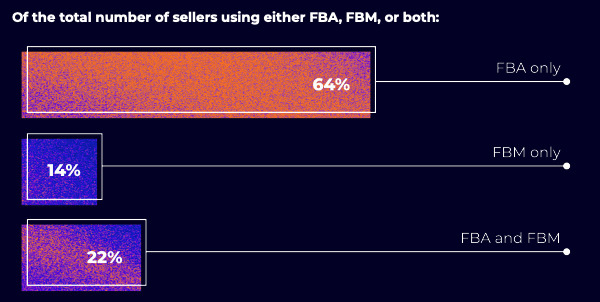
Source: Jungle Scout
In 2024, 36% of Amazon sellers used at least some FBM – and that number has fluctuated significantly in recent years as Amazon has rolled out significant changes to the FBA and SFP programs.
In this post, we’ll explore the relative advantages of FBA vs FBM and how you can make the choice that’s right for your business.
What’s the Difference Between Amazon FBA and FBM?
When it comes to selling on Amazon, understanding the differences between Fulfillment by Amazon (FBA) and Fulfillment by Merchant (FBM) is crucial. Amazon FBA allows sellers to outsource their logistics to Amazon entirely. This means that once your products are in Amazon’s fulfillment centers, Amazon takes care of the rest, ensuring fast and reliable delivery to customers. This method is particularly beneficial for sellers who want to leverage Amazon’s vast fulfillment network and focus more on marketing and growing their business.
Amazon’s fulfillment centers are used for storing and shipping products efficiently. Additionally, Amazon’s fulfillment network allows sellers to outsource order packing, shipping, and customer service. It’s a full solution that qualifies products for the coveted Prime badge and covers customer support on the back-end.
On the other hand, Amazon FBM puts the responsibility of storage, packing, and shipping on the seller. This can be done either by the seller themselves or through a third-party logistics provider. While this method requires more hands-on management, it offers greater control over the fulfillment process and can be more cost-effective for certain types of products. Understanding these two fulfillment methods and their respective advantages can help you make an informed decision that aligns with your business goals.
In short, FBM is the description for 3rd party sellers that don’t use FBA for fulfillment. With FBM, the seller (or a third-party logistics company that the seller hires) handles storage, picking & packing, and shipping for products sold on Amazon.
Slash Your Fulfillment Costs by Up to 30%
Cut shipping expenses by 30% and boost profit with Cahoot's AI-optimized fulfillment services and modern tech —no overheads and no humans required!
I'm Interested in Saving Time and MoneyWhat are the Relative Advantages of FBA and FBM?
Fulfillment strategy is an underappreciated aspect of ecommerce, and both FBA and FBM bring their own advantages and disadvantages that can make or break a seller. It is crucial to compare FBA costs with other fulfillment options using tools like the FBA Revenue Calculator to make an informed decision. So, what are the most essential differences between the two approaches?
Prime Badge Eligibility
First up: the all-important Prime badge. Simply turning on a Prime badge for a product for the first time can boost sales by up to 50%, so if you can get it, you should.
FBA makes it simple – if your product is in FBA, it gets the badge.
FBM is more complicated, and depends on whether your fulfillment approach qualifies for Seller Fulfilled Prime (SFP). SFP sets rigorous targets for how quickly merchants deliver items to customers, as of course fast & free shipping is the central value proposition of the Prime subscription. Amazon temporarily closed the SFP program to new enrollments in 2021, partly as a result of declining delivery metrics, but reopened it with new guidelines and requirements in late 2023.
What is the FBA Capacity Limit?
Due to the sheer number of sellers using FBA, Amazon can’t always keep up with demand for the program. They’ve responded by establishing rules for what inventory sellers can place in their warehouses, which can leave sellers unable to place all the products they’d like in FBA. These are now called FBA Capacity Limits, and they are adjusted monthly to reflect seller demand and Amazon’s space constraints.
Sellers who need to accommodate significant demand fluctuations can manage their FBA inventory alongside FBM options to maximize profits and maintain customer satisfaction without sacrificing the benefits of FBA fulfillment.
FBM, on the other hand, is only limited by how much warehouse space a seller can rent or purchase on their own or by how much space they can get from a 3PL. 3PL space is essentially limitless from the perspective of an individual Amazon seller, so you’ll never ‘run out’ of space for FBM.
What are Fulfillment Costs for FBA and FBM?
FBA and FBM each have their own unique cost advantages – neither is best 100% of the time.
FBA charges fees based on fulfillment, storage, and optional services like labeling and removal. The fulfillment fee is calculated per unit, based on size and weight, and covers picking, packing, and shipping. Storage fees vary depending on time of year, with higher rates during Q4 due to increased demand. While FBA streamlines logistics and qualifies products for Prime shipping, sellers must account for additional costs like long-term storage and low inventory fees, which can add up for slow-moving products.
On the other hand, FBM sellers avoid Amazon’s fulfillment and storage fees by handling their own shipping and logistics. While they still pay referral fees (a percentage of the item’s selling price, varying by category), they can often save on fulfillment costs for slower-moving products. FBM works well for customized items, low-margin goods, or products with unpredictable demand, where sellers can maintain more control over costs and inventory. However, since FBM products don’t automatically qualify for Prime, they may face lower conversion rates compared to FBA listings.
In summary, for high-demand products with consistent sales velocity, FBA is often the better choice due to fast Prime shipping and reduced logistical hassle. Meanwhile, FBM is preferable for custom, niche, or handmade items, where sellers can optimize shipping costs and avoid high storage fees. The best option depends on a seller’s business model, cost structure, and ability to manage fulfillment independently.
Control of the Customer Experience
If you use FBA, then Amazon controls your customer experience – full stop. Your item will ship in Amazon boxes, with Amazon branding, and issues will be handled (or not) by Amazon’s customer service.
In contrast, with FBM, you’ll own much of the post-purchase experience. That means that you have the opportunity to use the unboxing experience to cross and upsell, for instance, and you’ll also handle issues with fulfillment. However, FBM merchants must take care that any inserts in their shipments comply with Amazon guidelines, or risk their selling privileges being revoked. In general, samples, thank you notes, requests for feedback, QR codes for additional information, and small thank-you gifts are permitted, but offering incentives for reviews or any other tactics to engineer reviews are not allowed. If there is doubt, be sure to check the Amazon guidelines thoroughly when designing inserts and other unboxing extras.
So, FBA makes fulfillment easy, but it can also represent a missed opportunity to upgrade the customer experience. With FBM, you can turn your post-purchase process into value added for the customer, build loyalty, and increase your profit-boosting repeat rate. Additionally, successful resolution of customer issues can actually increase customer loyalty, so with a great customer service team you can turn the challenges presented by FBM into opportunities.
Maximize Your Time with FBM and a 3PL Partner
As a seller, you want to focus on selling, not logistics. FBA handles fulfillment for you, so less of you and your team’s time will have to go into operations. This difference between FBA and FBM is especially apparent if you’re fulfilling orders yourself, in which case you could be buried by a surge in orders.
On the other hand, FBM with a trusted third party logistics (3PL) provider can be just as easy, if not easier, than FBA. Just like FBA, a great 3PL will take fulfillment off of your hands and leave the majority of your time free to focus on growth.
Looking for a New 3PL? Start with this Free RFP Template
Cut weeks off your selection process. Avoid pitfalls. Get the only 3PL RFP checklist built for ecommerce brands, absolutely free.
Get My Free 3PL RFPEnabling Multi-Channel Growth
Amazon FBA and FBM are powerful tools for sellers looking to expand their business across multiple sales channels. By outsourcing fulfillment to Amazon, sellers can concentrate on marketing and selling their products, while Amazon handles the logistics. This is particularly advantageous for those aiming to grow beyond Amazon and sell on other platforms, such as their own website or other marketplaces.
With Amazon FBA, sellers can utilize Amazon’s fulfillment network to ship orders from any sales channel, making inventory management and order fulfillment across multiple channels more streamlined.
Amazon FBA can be used to fulfill orders for select ecommerce shopping carts like Shopify, and when it does so it’s called Amazon Multi Channel Fulfillment (MCF). This integration allows Amazon sellers to maintain a consistent and efficient fulfillment process, regardless of where the sale originates. By leveraging FBA, sellers can ensure that their products are delivered quickly and reliably, enhancing customer satisfaction and driving growth across all their sales channels.
More and more sellers are pursuing a multi-channel sales and fulfillment strategy that diversifies their portfolio and gives them more avenues for growth. Utilizing other sales channels as part of a broader strategy can significantly enhance operational efficiency and sales opportunities.
Amazon MCF uses the exact same infrastructure as FBA, but it also comes with all of the drawbacks associated with FBA fulfillment, and has a more expensive fee structure. As you can see in the below table, MCF is significantly more expensive than FBA. It will deliver your products fairly quickly, but it doesn’t guarantee the same SLAs as FBA. On top of that, your orders for non-Amazon products will ship in Amazon boxes. Not ideal!
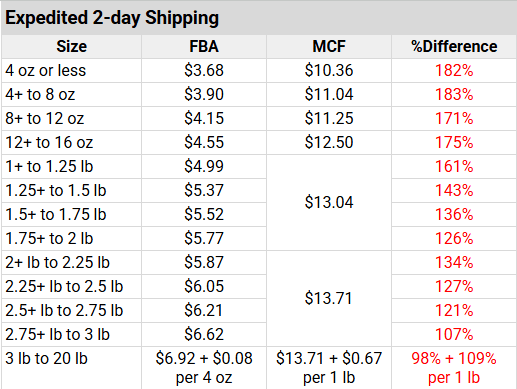
On the other hand, FBM with a great third party logistics (3PL) provider can also unlock multi-channel growth for you, without the fees associated with MCF. The best 3PLs integrate seamlessly with all major marketplaces and shopping carts, so getting your operations set up with a new channel can be as simple as a few clicks.
Amazon Buy with Prime
FBM is designed for sellers that want to sell on Amazon and handle their own fulfillment, but Amazon has an additional offering for sellers that want to leverage Amazon’s vast logistics network not through any third-party sales channel or marketplace, but from their own direct-to-consumer (DTC) websites.
Amazon’s Buy with Prime program allows ecommerce merchants to offer Prime benefits—such as fast, free shipping and easy returns—from their native websites. One of the biggest advantages of the program is that it boosts conversion rates, as Prime members are more likely to complete purchases when they see the familiar Prime badge, and they already trust Amazon’s fulfillment network. Sellers can benefit from Amazon logistics without being restricted to Amazon’s marketplace, giving them more control over branding and customer relationships while still benefiting from fast, reliable shipping.
However, Buy with Prime comes with added costs and limitations. Sellers must pay fulfillment fees, payment processing fees, and referral fees, which can be higher than handling fulfillment independently. Additionally, while Amazon handles shipping and returns, sellers lose some control over customer data, as Amazon processes payments for Buy with Prime orders. This means sellers may have limited access to valuable customer insights that could otherwise be used for marketing and retargeting. Despite these trade-offs, Buy with Prime can be a strong choice for brands looking to boost trust and conversions while outsourcing fulfillment. That said, it may not be cost-effective for all merchants, especially those with thin margins or specialized shipping needs.
How to choose FBA vs FBM for your business
When considering whether FBA, FBM, or a mix of the two is right for your business, ask yourself a few questions:
- Do you need the Prime badge to succeed?
- What size are your products?
- Do you have plans to sell on channels other than Amazon?
- Are you comfortable with letting Amazon dictate the customer experience?
- How accurately can you predict demand?
You only need FBA if you’re selling only on Amazon, you’re comfortable letting Amazon control your customer experience, and you can predict demand fairly easily. FBA will take care of fulfillment for you and qualify you for Prime, enabling you to focus your efforts on growing on the channel.
If you have multi-channel growth ambitions you’re probably going to need to fulfill yourself or an additional fulfillment partner other than Amazon, so the sooner you can consolidate operations under one roof, the better it is for your efficiency. If you want to use the post-purchase experience to improve your customer loyalty and repeat rate, you’ll need FBM as well.
Scale Faster with the World’s First Peer-to-Peer Fulfillment Network
Tap into a nationwide network of high-performance partner warehouses — expand capacity, cut shipping costs, and reach customers 1–2 days faster.
Explore Fulfillment NetworkUsing Both FBA and FBM
Many successful Amazon sellers find that a hybrid approach, using both FBA and FBM, can be the most effective strategy. By leveraging the strengths of each fulfillment method, sellers can optimize their operations and maximize profitability. For instance, using FBA for products that are eligible for Prime shipping and have high demand can help boost sales and take advantage of Amazon’s efficient logistics. Meanwhile, FBM can be used for slower-moving items or those with special shipping requirements, providing greater control and potentially lower fulfillment costs.
This dual approach allows sellers to diversify their fulfillment strategy, reducing reliance on a single method and increasing flexibility. It also helps in managing fulfillment costs more effectively, as sellers can choose the most cost-efficient method for each product. Additionally, by using both FBA and FBM, sellers can better handle fluctuations in demand and avoid stockouts, ensuring a more resilient and adaptable business model. This strategy not only enhances operational efficiency but also opens up new opportunities for growth across various sales channels.
Cahoot: Your Best FBM Solution
Cahoot’s FBM fulfillment services will fuel your profitable growth on Amazon and unlock opportunity on all other ecommerce channels at the same time. Unlike most other 3PLs, we’ve built our network to the highest standard, so we enable affordable Seller Fulfilled Prime for many of our FBM clients.
On top of that, our innovative peer-to-peer fulfillment network offers low-cost, fast fulfillment by design. We’re changing the industry by empowering merchants with excess warehouse space and resources to provide high-quality order fulfillment to other merchants. Unlike other 3PLs, we empower merchants to help other merchants, and our community levels the playing field with Amazon. Thanks to our unique model, our pricing is typically lower than what you’ll find from other 3PLs, but we can beat them on fulfillment speed and reliability.
If you’d like to find out how Cahoot can help your business, please get in touch with us. We can’t wait for you to join our community and boost your profitable growth.
Frequently Asked Questions
What are the total costs of using Amazon FBA?
Sellers considering using FBA fulfillment should take all fees into account when considering it as a fulfillment solution. These fees include fulfillment fees, monthly inventory packaging charges, storage fee, referral fee, selling plan charges, advertising fees, and return or repackaging fees. Amazon provides this revenue calculator tool to help sellers make informed decisions about their product fulfillment.
How do I get products ready for Amazon FBA?
Amazon requires that products arriving at FBA fulfillment centers should arrive ready to ship and any products that sell as a single unit must be packaged together on arrival. Products must also must be properly barcoded with a UPC, ISBN, EAN, or FNSKU, depending on the seller’s account settings. Cartons or case packs with multiple units should not have a scannable barcode.
What are the total costs of using Amazon FBM?
Amazon charges a monthly subscription fee to sell on the platform, which depends on the seller plan selected. There are also per-order and referral fees. No fulfillment or storage fees are applicable since the Amazon fulfillment center network is not being used, but sellers must fulfill their own orders or seek a 3PL partner.

Turn Returns Into New Revenue

What are National Fulfillment Services?
In this article
 12 minutes
12 minutes
What are national fulfillment services?
In theory, any fulfillment provider can offer national fulfillment services – after all, carriers like FedEx and UPS will happily ship parcels across the entire United States (and charge a boatload for it). However, fulfilling nationally from one or two locations is costly and slow due to inefficient fulfillment processes and exorbitant shipping costs. So businesses are left with smaller margins and disgruntled customers waiting too long for packages.
A truly nationwide fulfillment solution has warehouses strategically placed across the entire United States, and it will distribute inventory across those multiple locations. With this strategy, there’s inventory close to all customers, so no matter where in the country the order comes from, it ships quickly and cheaply. In this article, we’ll cover when growing ecommerce businesses should switch to a nationwide network and provide advice on how to choose the right provider.
Defining Order Fulfillment
Order fulfillment is the backbone of any successful ecommerce operation. It encompasses the entire process of receiving, processing, and shipping customer orders in a timely and efficient manner. This multifaceted process includes several critical activities: managing inventory to ensure products are in stock, processing orders accurately, packaging items securely, and shipping them promptly. Each step is vital to ensuring that customer orders are fulfilled correctly and on time, which in turn drives customer satisfaction and loyalty. Effective order fulfillment is not just about moving products from point A to point B; it’s about creating a seamless experience that meets or exceeds customer expectations.
Importance of Order Fulfillment in Ecommerce
In the fast-paced world of ecommerce, order fulfillment is a key determinant of customer satisfaction and business success. When orders are fulfilled quickly and accurately, customers are more likely to have a positive experience, leading to repeat business and word-of-mouth referrals. On the other hand, delays, errors, or damaged goods can result in negative reviews and lost customers. Clear customer communication can help mitigate this, but that’s just a delaying action; improving the fulfillment process and increasing prompt delivery is the foundation of success. Therefore, ecommerce businesses must prioritize efficient and reliable order fulfillment processes. Investing in robust order fulfillment systems and partnering with reliable fulfillment centers can significantly enhance customer satisfaction, build a positive reputation, and ultimately drive business growth.
Slash Your Fulfillment Costs by Up to 30%
Cut shipping expenses by 30% and boost profit with Cahoot's AI-optimized fulfillment services and modern tech —no overheads and no humans required!
I'm Interested in Saving Time and MoneyHow National Fulfillment Services Work
National fulfillment services are designed to support a nationwide shipment network; shipping orders same-day to help save on shipping and fulfillment costs while maintaining prompt delivery to American customers no matter where they are.
Here’s an overview of how national fulfillment services work:
Order Receipt and Processing
When a customer places an order on an ecommerce platform, it is sent to the fulfillment center’s system, which then triggers the processing of the order. The order is reviewed for accuracy and any discrepancies or issues are addressed promptly. The fulfillment center’s team then picks and packs the ordered items, ensuring that they are properly packaged and labeled for shipping. This meticulous order fulfillment process ensures that customer orders are handled with care and precision, minimizing errors and enhancing customer satisfaction.
Inventory Management and Storage
National fulfillment services also involve the management and storage of inventory at each warehouse location. The fulfillment center stores the business’s products in a secure and climate-controlled environment, ensuring that they are protected from damage and deterioration. The fulfillment center’s inventory management system tracks the levels of inventory, ensuring that the business is notified when stock levels are low, and reordering should be initiated. This proactive approach to managing inventory helps businesses maintain optimal stock levels and avoid stockouts, which can disrupt the fulfillment process and negatively impact customer satisfaction, while at the same time minimizing costs of storing heaps of items in long-term storage.
Shipping and Delivery
Once the order is processed and packaged, it is shipped to the customer via a reliable shipping carrier. National fulfillment services often have partnerships with multiple shipping carriers, ensuring that the best rates and delivery times are secured. The fulfillment center’s system tracks the shipment, providing real-time updates on the status of the order. This comprehensive shipping service ensures that customer orders are delivered promptly and accurately, further enhancing the overall customer experience.
Warehouse Management System (WMS)
A Warehouse Management System (WMS) is a software application that manages and controls the day-to-day operations of a warehouse or fulfillment center. The WMS tracks inventory levels, monitors order processing, and optimizes warehouse operations. National fulfillment services use a WMS to ensure that orders are processed efficiently and accurately, and that inventory levels are always up-to-date.
The WMS is integrated with the business’s ecommerce platform, ensuring that orders are received and processed in real-time. The WMS also integrates with shipping carriers, ensuring that shipments are tracked and updated in real-time. This integration enables national fulfillment services to provide real-time updates on order status, ensuring that customers are always informed. By leveraging advanced technology and integration, national fulfillment services can provide businesses with a scalable and efficient order fulfillment solution, enabling them to focus on growth and customer satisfaction.
By incorporating these features, national fulfillment services can streamline logistics operations, reduce errors, and enhance overall efficiency. A national fulfillment service is a crucial edge for businesses looking to stay competitive in the fast-paced world of ecommerce.
When Should a Business Upgrade to a National Fulfillment Solution?
Businesses that start out on Amazon usually have a ready-made option for national fulfillment in Fulfillment By Amazon (FBA). Amazon has famously built its fulfillment network to massive proportions, and they have the most ecommerce fulfillment locations across the United States. For all non-FBA orders, the business is likely shipping out of either their own small warehouse, a small single 3PL, or even just a garage. Small, single operations like these don’t have the scale to match larger networks for efficiency.
It’s surprising how easy it is to gain value from a nationwide network – and how soon it can be done. At just a few hundred orders per month, businesses reach the point of enough scale to distribute inventory to multiple locations across the country. The benefits of national fulfillment will far outweigh the small increase in inventory needed to supply multiple locations.
The one caveat to this guidance is that if a business has very high SKU diversity, they’ll benefit most from outsourcing their high volume SKUs only. Low volume, “long tail” SKUs benefit much less from distributed fulfillment.
Looking for a New 3PL? Start with this Free RFP Template
Cut weeks off your selection process. Avoid pitfalls. Get the only 3PL RFP checklist built for ecommerce brands, absolutely free.
Get My Free 3PL RFPBenefits of National Fulfillment Services
National fulfillment services are vital for ecommerce businesses that want to boost revenue growth and protect margins. Fulfillment companies play a crucial role in providing order fulfillment services, especially for international sellers entering the U.S. market.
Utilizing a network of fulfillment centers across various countries allows businesses to reach a worldwide customer base quickly and economically. Global fulfillment enhances shipping efficiency and reduces costs for ecommerce businesses.
1. Nationwide Fulfillment Boosts Revenue Growth
“Fast and free” shipping badges are one of the single most effective growth tools in the ecommerce industry. Amazon metrics show that adding a Prime badge to a product for the first time improves conversion by 50%, and Walmart similarly found that their TwoDay badge drives a 50% lift. Every major marketplace and shopping cart now has their own version of the Prime badge, and each finds a big revenue boost from using the badge.
If a business is shipping out of one or two locations, it can qualify for fast and free shipping badges simply by paying express carrier rates – but what’s the point of revenue growth if shipping costs more than the product itself? Nationwide fulfillment networks unlock profitable revenue growth through fast shipping by placing inventory across the country. By leveraging nationwide fulfillment locations, every order will be fulfilled by a nearby location, so the cheap shipping options still deliver within 1 or 2 days. Turn on those badges across all channels and reap the rewards of better search rankings and higher conversion while still saving money on shipping.
2. Minimize Shipping Costs
Businesses shipping from just one or two locations will often see half or more of their orders shipping to Zone 5 and up. Compared to shipping out of a single location, national fulfillment distributes inventory more efficiently across the country through multiple warehouse locations, so orders are shipped from a starting point much closer to their destination.
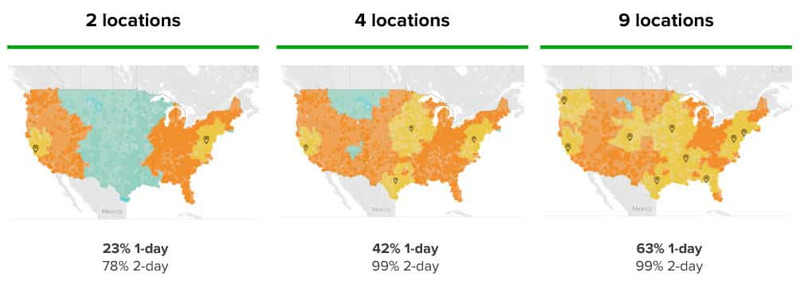
Placing inventory in 3-5 locations all but eliminates the need to ship above Zone 4, cutting a business’s average zone profile by multiple zones. Every one of those shipping dollars saved goes straight to the bottom line; saving a few shipping zones on every order means saving a few dollars on every order. Imagine $2.00 more profit on every order.
3. Reduce Supply Chain Risk
Capacity is strained at every point of the supply chain, from international shipping to last mile delivery. Capacity isn’t crunched equally across the country though, which means that a nationwide network can significantly reduce the risk that all available inventory will be stuck in the same massive delay.
If there’s a delay in the supply chain affecting a region, inventory located at warehouses in other regions can pick up the slack. With only one or two small warehouses that might not be an option. Inclement weather is another common cause of regional disruption. If the only warehouse is closed due to hurricanes, snow, fire, or other natural cause then fulfillment may be completely frozen.
If that happens then selling because they had no way to fulfill orders. If they had a nationwide network, they would have kept on selling even as one part of the country shut down.
Additionally, a nationwide network allows inventory management across multiple locations through a single dashboard, enhancing operation scaling and improving customer service.

Cahoot National Fulfillment Services
Cahoot’s nationwide network of over a hundred warehouses provides affordable national fulfillment solutions for ecommerce business. Businesses with just one or two locations need to ship express to cover 99% of Americans with 1- and 2-day shipping, so fulfillment across the US is surprisingly expensive with two-coast providers. On the other hand, Cahoot will strategically distribute inventory to a truly national footprint so that a business can ship to 99% of the country in 1- and 2-days but always pay lower cost, ground shipping, rates.
Unlike other providers, Cahoot has the flexibility to upgrade a business’s existing warehousing and fulfillment services. If a business is fulfilling out of one or two warehouses, Cahoot can add a few fulfillment locations to seamlessly extend the network into a nationwide footprint. With this approach, businesses can continue to get value out of existing assets while enjoying the benefits of a nationwide network.
Getting started with Cahoot is surprisingly easy – with pre-built integrations for major ecommerce channels like Amazon, Walmart, Shopify, and BigCommerce, businesses can boost growth with fast shipping badges in under two weeks.
Contact Cahoot today to learn more about how our nationwide fulfillment network can be the key that unlocks profitable ecommerce growth.
Scale Faster with the World’s First Peer-to-Peer Fulfillment Network
Tap into a nationwide network of high-performance partner warehouses — expand capacity, cut shipping costs, and reach customers 1–2 days faster.
Explore Fulfillment NetworkConclusion
Selecting the right fulfillment company is a critical decision for any ecommerce business. A comprehensive national fulfillment center offers a wide range of services, including warehousing, packaging, and shipping, which can streamline logistics operations and improve overall efficiency. When evaluating potential fulfillment centers, it’s important to consider the breadth of services they provide. A center that can handle everything from inventory management to last-mile delivery can be a valuable partner in ensuring smooth operations and high customer satisfaction.
Location is another crucial factor. A fulfillment center with multiple strategically placed facilities across the USA can significantly reduce transit times and shipping costs. This geographic advantage ensures that customer orders are shipped from the nearest location, leading to faster delivery times and lower shipping expenses. Additionally, a fulfillment center with a robust network of warehouses and distribution centers can offer more flexible and responsive logistics operations, allowing businesses to adapt quickly to changing market conditions.
Advanced technology is also a key consideration. Fulfillment centers equipped with automated sorting and packing systems can enhance efficiency and accuracy, reducing the likelihood of errors and delays. By leveraging technology, fulfillment centers can provide faster and more reliable service, which is essential for maintaining high levels of customer satisfaction.
Ultimately, the right fulfillment center for an ecommerce business will depend on its specific needs and requirements. By carefully evaluating the range of services, locations, and technology offered by different fulfillment centers, businesses can make an informed decision and choose a fulfillment partner that aligns with their goals and helps them achieve operational excellence.
Frequently Asked Questions
What is order fulfillment?
Order Fulfillment is the part of ecommerce relating to shipping products to customers. This starts with inventory management, going through processing orders at shipping locations, until products arrive at the customer’s doorstep.
What are nation-wide fulfillment centers?
Technically a fulfillment center is only a single location, so a fulfillment service needs multiple centers/warehouses to be considered nation-wide.
How many fulfillment centers are needed to provide 2 day ground shipping nation-wide?
This depends on several factors, but with 4+ fulfillment locations, 99% of the US population can be reached in 2 days via ground shipping. Cahoot has over 100 fulfillment locations to help deliver to US customers across the country.
Are nationwide fulfillment centers 3PL or 4PL?
A 3PL can support nationwide fulfillment, but the more locations a 3PL has, the closer they are to becoming a 4PL.

Turn Returns Into New Revenue

Peer-to-Peer Order Fulfillment for Efficient and Affordable Shipping
In this article
 24 minutes
24 minutes
Listen to podcast here.
Podcast: ProShip ParcelCast Episode 23: What is a Peer-to-Peer Order Fulfillment Network?
Cahoot AI founder Manish Chowdhary discusses the need for distributed order fulfillment and the benefits of a peer-to-peer order fulfillment services network on a podcast. The network is a platform where eommerce brands and retailers collaborate to speed up order fulfillment and distribute inventory closer to the customer. The objective is to reduce shipping costs and improve customer experience with better and faster shipping. Distributed order fulfillment is the process of making free and fast shipping feasible and affordable for the retailer by placing inventory closer to the customer so that items can be shipped using affordable and inexpensive ground services rather than long-distance air that can be two to four times more expensive. An ecommerce brand or a retailer just needs four to five strategically located warehouses throughout the US to achieve two-day nationwide delivery guaranteed and nine warehouses to achieve one-day delivery like Amazon. Retailers have the option to build their own warehouses, lease them, sign up with multiple third party logistics (3PL) companies, or join an order fulfillment services network like Cahoot.
Justin Kramer:
Welcome to the 23rd episode of ParcelCast, what is a peer-to-peer order fulfillment services network. I’m your host, Justin Kramer, co-founder of ProShip. And with me is my special guest, Manish Chowdhary, founder of Cahoot AI, a distributed shipping software and peer-to-peer order fulfillment services network. Manish, could you take a second to introduce yourself and your company?
Manish Chowdhary:
Absolutely, Justin. Thank you for having me. First of all, my name is Manish Chowdhary, I’m the founder and CEO of Cahoot. Cahoot is the world’s first peer-to-peer order fulfillment services network. In simple words, it’s a collaboration platform where brands and retailers collaborate to speed up fulfillment and distribute inventory closer to the customer so that we reduce the shipping cost and also improve the customer experience with regards to better and faster shipping for the end consumer.
Justin Kramer:
You know what, let’s take that further. Let’s go ahead and talk about the need for distributed order fulfillment. We hear about it a lot. Can you explain to us what it is, and what our retailers’ options are nowadays?
Slash Your Fulfillment Costs by Up to 30%
Cut shipping expenses by 30% and boost profit with Cahoot's AI-optimized fulfillment services and modern tech —no overheads and no humans required!
I'm Interested in Saving Time and MoneyManish Chowdhary:
That’s a great question, Justin. Distributed order fulfillment is nothing but a methodology on making the free and fast shipping feasible and affordable for the retailer. When the consumers order stuff online, especially on sites like Amazon, they are conditioned now to expect free two-day delivery. In fact, Amazon has raised the bar on making it free one day delivery with Prime. Almost one-third of all Amazon Prime items get delivered in one business day, which is astounding. And for Amazon, business day is Monday through Sunday, so it’s not even business day anymore. And that’s the expectation that the consumers have with every ecommerce brand, every retailer. And for the brand or the retailer to make that affordably happen is bring the inventory closer to where the consumer is located so that item can be shipped using affordable, inexpensive ground service. As opposed to the long distance air, which is in on average two to four times more expensive than the economy ground shipping. So distributed order fulfillment is basically placing your inventory smartly closer to your customer so you can achieve one-day, two-day delivery without breaking the bank.
Justin Kramer:
Awesome, awesome. What kind of tools, technologies, and SLAs should we expect from something like this if I’m a mid-size retailer looking to get into something like this?
Manish Chowdhary:
You essentially have three options. One, you can go and build additional warehouses, and these are warehouses that need to exist at strategic locations. Meaning, having a warehouse in Wisconsin, for example, is not going to be very effective because that’s not where the large population lives. Of course, tri-state area, New York, New Jersey, closer to the port, that’s where a lot of the inventory from overseas come in. But also it’s a very densely populated region. And so is Southern California like Los Angeles, Long Beach, Orange County. And then of course the upper Midwest like Chicago and so on. In order to achieve two-day nationwide delivery guaranteed, a brand or a retailer needs four to five strategic warehouses throughout the nation. And if you wish to achieve one-day delivery like Amazon, you need nine warehouses strategically located in the US. And I mean strategic.
If you had a warehouse that is not in a strategic location, you’ll need many more. And so you have options. Your options are you’re going to go build these warehouses, which is very capital intensive, and you don’t know what the market is going to look like. And then also it’s getting the permits, getting all of this takes a very long time. Second option is to lease it. Again, same problem, you’ll need to enter into long-term leases because warehouse spaces in such short supply, which also is a pretty large commitment and investment. The third option is you have to go and sign up with multiple 3PLs. Because two-thirds of the 3PL, or third party logistics companies, the companies that professionally provide order fulfillment services to brands of retailers in the US are mom and pop, two-thirds. The remaining one-third are the largest of the world.
Those are the people that become the landlord to Amazon and Macy’s and others, which are largely out of reach for most mid-sized sellers. So now you need to go and negotiate and acquire these multiple 3PL with different agreements, different contracts, and then you need the technology to glue it all together because there is no [inaudible 00:05:05] to choke, so as to speak, if there’s a problem. And so all of this creates a huge burden, a huge investment for the brand or the retailer to achieve. Or the fourth option, which is really a more newer and emerging option, is to join a contract with an order fulfillment services network such as Cahoot. And there are a few others that has nationwide footprint, that has multi dozen warehouses that can achieve that delivery target, that SLA seamlessly. So that’s another option.
Justin Kramer:
You talk a lot about Amazon. Is Amazon Prime a distributed order fulfillment services network? Is that something that people are looking at at the… Or should I say, is that something that is the high end of what we’re talking about?
Manish Chowdhary:
Amazon FBA, which powers the Amazon Prime program, fulfillment by Amazon, is by far the largest distributed order fulfillment services network in the world. Not only the US. They have over 120 warehouses, not to count the sortation facilities and other cross stock facilities in the US. Amazon invested more during the pandemic in building out their fulfillment services network than they had invested in the previous 18 years. So the amount of money and resources that Amazon poured in 2020 and 2021, and also part of 2022, dwarfs the investment… Almost, they increased their footprint three times, and that’s why we heard some headlines about Amazon over building and they needed to rent out. Those were some headlines. And then trying to optimize their cost, laying off workers, closing down facilities. Amazon, like many of the other brands and retailers had overbuilt. But Amazon is by far the largest distributed order fulfillment services network in the world.
Justin Kramer:
If I’m a growing retailer and I’m looking to get into something, how is all this power that Amazon has, how does that impact me?
Manish Chowdhary:
Absolutely. Suffice to say that nearly every brand, every retailer should have an Amazon strategy. It’s hard to ignore Amazon is a sales channel when 60% of all e-commerce searches begin on Amazon, not on Google. Even whether you like Amazon or you don’t like Amazon, the reality is millions and millions of consumers go to Amazon every single day. And if they can’t find your products there, then that’s a problem, because you may be missing out on a big opportunity. A big, large segment of your target audience and population. Amazon does many things really, really well. And Amazon being the largest order fulfillment services network, but also Amazon Prime is the largest loyalty program in the world. By a long shot, you’ve got over 130 million, I don’t even have the real numbers as of now, but over 100 million subscribers that pay $120 a year to Amazon, and they get a whole host of benefits.
And the biggest benefit of it all is the free one-day, two-day delivery with no minimum. So you could literally order paperclips on Amazon, have it delivered the next day, and not pay anything for delivery because you’ve already paid into the membership program. So that is what consumers love. And while Amazon FBA is great at many things, and I can cover this if you like, I can elaborate on it. It’s not the be all and end all. It is good for many times, however, it has its own set of challenges that the retailers and ecommerce brands must be aware of.
Justin Kramer:
Let’s go ahead and ask one last question. Let’s talk about Buy With Prime. Can you tell me what the larger impact is of this program on e-commerce as a whole?
Manish Chowdhary:
That’s an excellent question, Justin. Buy With Prime launched in April of this year, this is something that has been a long time coming. As you and others listening may be familiar with, Amazon does everything at very large scale. They perfect a service first for themselves, and then they look to monetize that across the entire business ecosystem. And that’s exactly what Buy With Prime is. Buy With Prime is Amazon’s initiative to become even larger third party logistics company where Amazon will extend its Prime membership to other channels other than Amazon. Let’s say you have a website that is hosted on Shopify or on Magenta, or any website, you could install a Buy With Prime logo, a button, and you can send that inventory to Amazon FBA, and the consumer can now check out using the familiar Amazon account and get that product in one or two days.
Buy With Prime essentially extends all of the Prime benefits to websites other than Amazon. And we already seeing many, many sites that have adopted and embraced this because Amazon makes it so easy for the brands and retailers to fulfill their orders. And if brands and retailers that are heavy into FBA that sell a lot on Amazon for them, it’s a no-brainer. And so what the term or the phrase that I like to use here is, gradually and then suddenly. Up until now, consumers have been expecting the Prime benefits or one-day two-day delivery only on Amazon. But now let’s take an example. If you are a shoe retailer, and there are two of them, Acme Inc and ABC Inc. Acme Inc starts providing Buy With Prime on their website, and ABC Inc does not. Now as a consumer, I’m more likely to go check out from here, if all things being equal. So this is going to lead to this massive adoption and even acceleration of delivery expectation among consumers, because they now expect that same Prime-like experience on every channel they shop on.
Justin Kramer:
Interesting, interesting. Okay, let’s go ahead and switch topics here. Let’s talk about this new fulfillment economy and the workshare model. To the average logistics persons, companies like Gap, American Eagle, Quiet Logistics, Airterra, they were offering something very similar to what it sounds like the Cahoot network is offering. Can you talk to us a little bit about the similarities and the differences?
Manish Chowdhary:
Yeah, this is a new development that’s happening in the e-commerce and retail logistics space. Cahoot was of course the pioneer in peer-to-peer collaboration. And essentially, Cahoot acts as a neutral third party where there are plenty of merchants. There are about three million online merchants in the US compared to about 20,000 3PL companies. So these are third party logistics companies that will provide fulfillment as a service. By sheer comparison, and the analogy I’d like to make is Airbnb versus Hilton. There are many more homes with spare bedroom and a spare wing than there are hotel rooms in the US. Rather than building more warehouses where rooms are going empty, or the space is going empty in these millions of warehouses. Cahoot is aiming to bring these surplus capacity into the market so as to reduce the cost and improve utilization. This goes hand in hand with trying to make the most or more of what resources we already have, as opposed to trying to spend more capital expense, which essentially increases the cost one way or the other for the brand or the retailer.
What Cahoot has done is created a network of very highly qualified, highly vetted brands and retailers that do a spectacular job of order fulfillment for themselves, but that have extra capacity, let’s say 5, 10, 50, 20, 100,000 square feet of excess capacity. For the very first time, they can join the Cahoot network and monetize that excess capacity by fulfilling orders for other brands. And Cahoot acts as the independent governing body with the technology, the software, so that it is not a distraction for them. It is simple, it’s easy, and it’s effective. And it also gives the seller, the brand, our customer, the assurance that we are holding everybody accountable. And there is harmony and there’s SLA being delivered. And so it’s very exciting to see other retailers like Gap and American Eagle finally come to embrace the model that we’ve been preaching for a long time.
And the one difference, there’s not a lot we know about these models because there’s not a lot published on them because it’s still a closed system. But one thing, suffice to say that most brands, most retailers would prefer an independent body to audit the service provider. And that’s the advantage that Cahoot provides, because Cahoot is not representing just the buyer or just the warehouse. Cahoot is the independent body that keeps everybody organized and creates a common rule and level playing field for all the participants, and provides the visibility. That’s the one thing that I personally believe that having that independent body is a very crucial, it provides trust, it provides visibility, and it provides the assurance and it provides accountability. We would very much welcome Gap and American Eagle to join Cahoot so that we can give that assurance to small and large size retailers.
Justin Kramer:
And it also sounds like if I’m a Cahoot member I can now more easily expand to those five to nine distribution points so I can have two-day or next day delivery for most of the country.
Looking for a New 3PL? Start with this Free RFP Template
Cut weeks off your selection process. Avoid pitfalls. Get the only 3PL RFP checklist built for ecommerce brands, absolutely free.
Get My Free 3PL RFPManish Chowdhary:
Absolutely. The whole idea is, how do we create a Prime-like network and Amazon FBA-like network without the challenges that FBA faces? FBA is great at many things, but it does not… Even to this day, many, many sellers could not get their inventory into FBA on time for the holidays. They had limits placed on their account that they could only send so many units, and they rely on other networks like Cahoot to fulfill even their orders on Amazon. While Amazon is growing, they’re launching all these services, it has its own set of challenges. Amazon is not geared for all things to everyone at all time because Amazon only wants fast moving inventory. But from a retailer’s perspective, they also need to fulfill their wholesale orders, they need to fulfill orders from Walmart. Which, you cannot use FBA to fulfill, it’s against Walmart’s rules and policies that you cannot have a Amazon branded box being delivered to the Walmart customer that bought the item on the Walmart marketplace. And rightfully so.
Justin Kramer:
Let’s switch over to some other networks that sound like they’re similar. I know that the carriers, some of the airlines, and other particular merchant groups have some stuff similar to this. Can you talk about that and compare and contrast a little bit for us?
Manish Chowdhary:
Absolutely, Justin. The idea of coopetition has existed for a long time, where seemingly retailers may consider themselves to be competitors, but not necessarily. Because a retailer who has a warehouse in New York is really not competing with the retailer of a different product with a warehouse in California. It is in their interest to collaborate so that both of them win because they are not competing. And so we know of many, many very successful networks of this kind, going back to the, let’s take airline co-share. Not every airline flies to Maui, Hawaii. But if you want to get from Chicago to Maui, you might have to go from Chicago to Dallas, or Chicago to LA, and then LA to Maui, for example. For example, Delta, as part of the Sky team has many other airlines that share the code and so on.
So this is very, very common. It makes the airlines be profitable and able to service the needs of the customer. Because ultimately about getting to Maui, not about how many websites and tickets you need to buy separately. Likewise, we also know for examples in the flower delivery space, the FTD. Which is if I want to send flowers, I’m in New York and I need to send flowers to my sister-in-law in Palo Alto in California. Of course the local florist is not going to be the one delivering, but as part of the network, they can easily arrange for someone locally to deliver. And we’ve always known about the workshare model in the carrier space, which we know that USPS has long had workshare programs with UPS, FedEx. Programs like UPS Mail Innovation, FedEx Smart Post. Cahoot is simply extending the same concept to the world of order fulfillment and warehouses. Because ultimately, when there is greater utilization of resources that we have, that leads to a better experience and lower cost for all the participants involved.
Justin Kramer:
Very interesting, very interesting. Manish, can you tell our audience, what is a peer-to-peer order fulfillment services network?
Manish Chowdhary:
A peer-to-peer order fulfillment services network is a large scale nationwide network of warehouses that allows a ecommerce brand or retailer to compete at the level of Amazon Prime, which is one-day, two-day free delivery. Every brand, every retailer should be offering the service on all channels that they serve. And they can easily achieve that by joining Cahoot, because Cahoot has the number of locations and the diversity to place the inventory closer to the customer so that the items can be delivered inexpensively and fast without incurring additional cost. And on the fulfillment provider side, if you are a brand or retailer that has, owns, or operates a warehouse and has spare capacity, be it 5,000 square feet or 50,000 square feet, and you would like to monetize that excess capacity, excess space, please come check out Cahoot.ai and fill out a contact us form so you can apply to become a Cahoot fulfillment partner.
And we would love to speak with you, because we would love to add more warehouses to our network. So you benefit not just by providing faster and cheaper delivery to your customers, but also by monetizing your spare capacity so you make more out of your existing fixed investments.
Justin Kramer:
Excellent. Let’s go ahead and let’s move on to the changing base of reverse logistics. Let’s face it, over the last several years we’ve seen companies try to return everything. We’ve seen companies try to return nothing, just ask the customer to throw it away. But one way or another, we all know that reverse logistics is a huge part of the customer satisfaction story when it comes to e-commerce. Can you tell us a little bit more about it?
Manish Chowdhary:
Yes, Justin, this is of course when e-commerce was only 1% of total retail. Brands and retailers were motivating customers to shop online because it was, so-called it was a channel shift. It was giving customers more self-service option. It is akin to motivating customers in the grocery stores to do self-checkout now, you try to encourage them. And of course consumers got very, very much used to… And in order to do that, they offered free shipping on the way in, and they also offered free returns. Because it was one of those taking away the friction in online shopping that if you didn’t like something you could return it for free and no questions asked. Of course, that was intended to be simply an encouragement for the consumers to shop online, and which quickly changed into the concept of showrooming. It’s essentially consumers, especially in the apparel space, buying three items with the intention of only keeping one.
And because items are free to return, you could simply return it back. This went on for over a decade now, and sites like Amazon, or when the products are rather inexpensive, it costs more to ship them back and process that item that is returned than to let the customer keep the item. However, we are entering a new phase and we can see that with the brands like Zara and Gap and others that are cramping down and they’re saying enough is enough. There have been chronic people that constantly return items that is playing a havoc on the profitability of these companies. Essentially, the movement has already started, and some of the top brands and retailers have taken a lead that now if you want to return the item back to Zara, you’re going to have to pay a return fee, or you have to pay cover the cost of shipping. I think they’re going through a natural leveling of consumer expectations. And I don’t expect free returns to loss for most items in the next couple of years, that’s going to change quite dramatically.
Justin Kramer:
That will be very interesting, no more free returns. I know companies like Zappos, that’s exactly how they made their name in the market was you could bracket, by the size above, the size below, and get to choose what you wanted. Very interesting. Are you seeing this anywhere yet, or is this an expected 2023 trend?
Manish Chowdhary:
No, we heard from folks like Zara and others that they are already beginning to charge for returns. This is already in play now. It’s just not an idea or a thought. And of course, it takes a little bit of the top leaders to take a position and then others will follow. I expect of course, Amazon being the big bellwether, it remains to be seen what Amazon Prime is going to do because I think they constantly set the bar, so we’ll see. But also from a sustainability standpoint, Justin, this is not just about the cost. But if we encourage people to return, we are adding more carbon emissions. I think there will be brands that would take a stance that it is not just good for e-commerce, but it’s good for the planet. I do expect that the scales to be tilting in this direction not too long from now.
Scale Faster with the World’s First Peer-to-Peer Fulfillment Network
Tap into a nationwide network of high-performance partner warehouses — expand capacity, cut shipping costs, and reach customers 1–2 days faster.
Explore Fulfillment NetworkJustin Kramer:
Yeah. And I have to say, I think you’re right. Because you do see even Amazon in their partnership with stores like Kohl’s wanting you to just take it to that store where you’re already going to be, rather than putting it in its own, usually oversized box, sticking a label on it, and having it take up space on a truck or a trailer somewhere. All right, let’s move on to final thoughts. Question for you, is there any takeaways you want to make sure that our listeners have heard today and that they action against?
Manish Chowdhary:
My recommendation to all the listeners is that free and fast delivery, free one-day, two-day delivery is here to stay. And it’s not just on Amazon. Any channel that you’re selling on, you’ve got to embrace distributed order fulfillment. How you do it, there are four options as we covered earlier in the podcast. It is crucial in order to maintain your competitive positioning and also maintaining the consumer expectation, which is changing very rapidly. And especially with Buy With Prime program, which is going to launch, or rather, get rolled out quite aggressively in 2023. You want to get ahead of that. I would very strongly encourage to get a head start in 2023 and test this out, and make sure you have this systems and technology and your fulfillment and your providers figured out. And if you have spare capacity, why not put that to good use? Energy costs are all time high. So if you can make an extra income from your existing investments, that’s good for you, but it’s also good for the planet.
Justin Kramer:
Agreed. The one thing I took away from this, I’m going to try to narrow it down to a sentence. In the past we’ve always had buy, lease, or outsource. Right? But with a peer-to-peer network, we now have a fourth option. We can buy, we can lease, we can outsource two or 3PL, or we can collaborate with other like retailers. Is that correct?
Manish Chowdhary:
That is absolutely correct, Justin. I think we are all in this together, and that’s why our tagline, Cahoot’s tagline is Power of Many. It’s brands of retailers helping each other.
Justin Kramer:
All right. If you’d like to learn more, please visit us at proship.com or cahoot.ai. Thank you for joining us today. If you have any questions, just a reminder, you can reach ProShip at sales@proshipinc.com, or (800)-353-7774. We hope you join us for our next ParcelCast. Thank you for tuning in.

Turn Returns Into New Revenue

Ecommerce Fulfillment with Buy With Prime
Consumer expectations today are higher than they’ve ever been before. Many observers might put this down to rising incomes or things that shoppers visibly see every day, such as great marketing campaigns, innovative products, or competitive pricing. However, sellers have a secret weapon in the competition to acquire happy, loyal customers – fast, free shipping and order fulfillment.
The elevated customer expectations that online retailers face due to fast shipping times have been created by the “Amazon Prime Effect”. What is this effect, and what implications does it have for merchants selling online?
Constantly Increasing Consumer Expectations
Let’s go back to 2005, when Amazon introduced free two-day shipping on orders over $35, a move that many found puzzling – even illogical – at the time. Later in the same year, they introduced Prime, with its annual fee that allowed customers to get as many items as they wanted, with no shipping fees.
By the time of the Covid-19 pandemic, same-day shipping arrived on Prime. While Amazon continuing to raise the fulfillment bar has been great for them and their customers, competitors large and small have been scrambling to catch up. For example, it took Walmart 12 years to catch up and offer free 2-day shipping! As Amazon has gotten faster and faster at shipping, even their biggest competitors have taken a long time to reach the elevated shipping standards that Amazon makes table stakes.
On every channel today, the sellers winning are those offering shipping that can compete with Amazon. For example, Walmart listings (inspired by Amazon’s approach) offering 2-day delivery rank higher in search results, win the buy box more often, and see conversion lifts as high as 50%.

While pressures to provide ever-faster free shipping continue to increase, the pressures of intensifying competition are making it harder than ever for sellers to win. Costs at each step of the fulfillment chain (shipping, warehousing, and labor) are on the rise:
- Shipping: General Rate Increases have surged upward, remaining significantly higher than the prevailing inflation rate, making it harder and harder for merchants to absorb the last-mile costs involved in meeting the expectations of free same-day shipping.
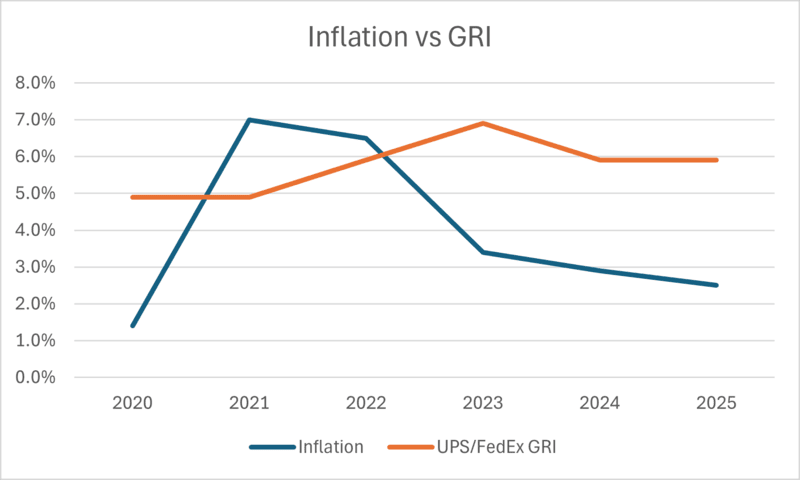
- Warehousing: To get orders fulfilled faster, you need to distribute your inventory in warehouses closer to the customer. But online merchants face the challenge of dealing with both elevated rent costs and limited vacant space in warehouses.
- Labor: As they continue to face significant staff turnover at fulfillment centers, Amazon has had to increase the wage they pay their workers several times in recent years. Most recently in 2024, they announced a new 7% increase in base pay for warehouse workers, bringing average base pay for such workers above $22/hr.
With shipping companies raising prices, warehouses becoming tougher to rent, and people becoming more expensive to hire, merchants face the daunting task of overcoming these challenges and meeting customer expectations.
What is Buy with Prime?
In 2022, Amazon raised the stakes yet again, making fast, free shipping available standard for every e-commerce brand and retailer through their Buy with Prime (BWP) program. This program allows any online merchant – not only those with Amazon stores – to offer order fulfillment using the elevated standard set by Prime. The program has already made a splash in a short time, with support from major brands such as Adidas and Fossil.
Amazon Buy with Prime is a program that allows third-party merchants to offer Prime shopping benefits—like fast, free shipping, a seamless checkout experience, and easy returns—on their own e-commerce websites. It integrates with a merchant’s online store, enabling Amazon Prime members to shop with confidence outside of Amazon.com while still receiving the perks they expect.
Any merchant with a Direct-to-Consumer (DTC) website and an Amazon Seller Central or Amazon Supply Chain account can apply for the Buy with Prime program. Merchants simply add the “Buy with Prime” button to their product pages on their own website, and customers then check out using their Amazon credentials, making the process faster and more convenient.
Amazon handles fulfillment and shipping, ensuring fast delivery through its logistics network, and also manages customer service and returns, simplifying post-purchase interactions.
Slash Your Fulfillment Costs by Up to 30%
Cut shipping expenses by 30% and boost profit with Cahoot's AI-optimized fulfillment services and modern tech —no overheads and no humans required!
I'm Interested in Saving Time and MoneyBenefits of Buy With Prime
Amazon’s Buy with Prime program offers significant advantages for sellers looking to boost sales and improve their customer experience. By enabling merchants to offer the Prime shopping experience directly on their own websites, the program increases trust and boosts consumer spending – by 16% on average according to Amazon! With fast, free shipping and a seamless checkout experience backed by Amazon’s fulfillment network, sellers can attract high-value Prime members who are accustomed to quick delivery and hassle-free returns.
Additionally, Buy with Prime helps sellers leverage Amazon’s logistics expertise without being limited to selling only on Amazon’s marketplace. They maintain control over their branding and customer relationships while benefiting from Amazon’s fulfillment and payment processing capabilities. Merchants can feature reviews from Amazon on their website and place ads on the Amazon Marketplace which link to their own website and drive traffic. The program can also reduce cart abandonment rates, as shoppers are more likely to complete a purchase when they recognize the reliability of Prime.
Limitations and Problems of Buy With Prime
Only SKUs that are fulfilled using FBA (Amazon’s in-house fulfillment) are Buy with Prime eligible. While FBA works well, the Buy with Prime button disappears from the product listing on your website if there is no more inventory available in Amazon warehouses, and standard FBA fees and regulations apply to all inventory in an Amazon fulfillment center. FBA is not ideal for SKUs that do not move quickly – the costs associated with stocking inventory with Amazon that does not turn over frequently can become very large.
The most imposing drawback to the Buy with Prime program, however, is the significant payment processing fees, representing 2.4% of the cart value + $0.30, as well as an additional 3% Prime service fee (min $1.00). Shopify stores can avoid much of the pain associated with these fees, as their payment processing fees are waived and only standard Shopify fees (and the Prime service fee) apply. That being said, sellers should remember that other applicable FBA fees (storage, etc.) will also apply to orders fulfilled from Shopify stores.
Alternatives to Buy with Prime
For sellers seeking to aggressively minimize the costs associated with fulfillment, Amazon’s FBA and Multi-Channel Fulfillment (MCF) programs are, on average, cheaper than utilizing Buy with Prime (although there are specific product types for which Buy with Prime may be more efficient than MCF). But what about merchants who want to meet the modern standard for fast, cost-effective shipping without losing control of their fulfillment processes or submitting to the rigid requirements for which Amazon has become infamous?
Usually, merchants look to 3rd Party Logistics Providers (3PLs) for solutions. However, 3PLs can often come with significant costs and limitations, as fulfillment is their primary revenue stream.
That’s where a solution like Cahoot comes in – we’re unlocking the potential of over 2 million e-commerce retailers in the US that have their own warehouse space, who perform complete order fulfillment.
For the first time ever, merchants, brands, and e-commerce retailers will be able to monetize excess capacity available in their warehouses through Cahoot’s peer-to-peer order fulfillment network, which delivers fast, free 1-2 day shipping while also lowering costs. We offer the industry’s leading Service Level Agreement (SLA) and we help our Amazon sellers by offering Seller Fulfilled Prime (SFP) services. If you’d like us to take over all aspects of order fulfillment, we can do that too!
Looking for a New 3PL? Start with this Free RFP Template
Cut weeks off your selection process. Avoid pitfalls. Get the only 3PL RFP checklist built for ecommerce brands, absolutely free.
Get My Free 3PL RFPConclusion
In an era where fast, free shipping is no longer a luxury but an expectation, sellers must carefully weigh their fulfillment options. Buy with Prime offers a compelling way to boost conversion rates and leverage Amazon’s logistics, but it comes with added costs and limitations that may not work for every merchant. While some sellers may find Amazon’s fulfillment solutions ideal, others may prefer alternative strategies that provide more control over operations and costs.
As competition intensifies and fulfillment challenges grow, innovative solutions like Cahoot’s peer-to-peer fulfillment network are emerging as viable alternatives. By leveraging existing warehouse capacity and a decentralized fulfillment model, sellers can meet the demand for fast, cost-effective shipping without the constraints of Amazon’s ecosystem. The key to success in today’s e-commerce landscape lies in choosing the right fulfillment strategy—one that balances speed, cost, and control to drive long-term growth.
Frequently Asked Questions
How does Buy with Prime benefit merchants?
Buy with Prime helps sellers leverage Amazon’s logistics expertise without being limited to selling only on Amazon’s marketplace. They maintain control over their branding and customer relationships while benefiting from Amazon’s fulfillment and payment processing capabilities. Merchants can feature reviews from Amazon on their website and place ads on the Amazon Marketplace which link to their own website and drive traffic.
What are the limitations of Buy with Prime?
Only SKUs that are fulfilled using FBA (Amazon’s in-house fulfillment) are Buy with Prime eligible. The Buy with Prime button disappears from the product listing on your website if there is no more inventory available in Amazon warehouses, and standard FBA fees and regulations apply to all inventory in an Amazon fulfillment center. Additionally, significant payment processing fees often apply.
This is why it’s important for sellers seeking to aggressively reduce the costs associated with fulfillment, to research alternatives to Buy with Prime.

Turn Returns Into New Revenue

Related Blog Posts
Buy with Prime Extends FBA to DTC Ecommerce
In this article
 8 minutes
8 minutes
This past Thursday, April 21st, Amazon launched a new service: Buy with Prime. For a fee, the service will let third-party ecommerce merchants use Amazon’s huge distribution network to fulfill orders on their own sites. It’s Amazon fulfillment for DTC sites.
On top of that, Buy with Prime web sites will be allowed to put the Prime badge on their websites next to items eligible for free 2-day and 3-day shipping (which will be most items), helping boost their conversion.
And finally, Amazon Prime members that purchase from third party sites that use Buy with Prime will have their payment and shipping information pre-loaded in the checkout window, further smoothing the conversion process and decreasing cart abandonment.
In this article, we’ll share what we know so far about the service and dive into pros, cons, and fulfillment service alternatives for sellers.
Who Benefits from Buy with Prime?
Amazon is targeting Buy with Prime firmly at online sellers with DTC stores. While Amazon previously offered its multi-channel fulfillment service to DTC sellers, this new offer seems in many ways to be a direct replacement, and we anticipate that they’ll slowly phase out Amazon MCF in favor of Buy with Prime.
While Buy with Prime is currently invite-only, Amazon’s new website for the program clearly demonstrates who they think will benefit most from using it. As you can see in the below screenshot, they’re positioning it as a way that DTC sellers can grow their business.
Buy with Prime asserts: if you’re a DTC seller, you can stop worrying about fulfillment and delight customers with fast and free shipping by signing up with us.
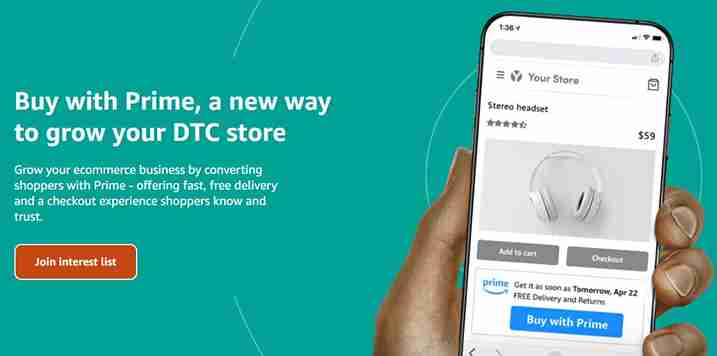
It stands to reason that this will become and remain Amazon’s fulfillment solution for direct-to-consumer online sellers, but that it likely won’t grow further. It would be remarkable if other marketplaces like Walmart or Target integrated with Buy with Prime (at least for the time being), and we’ll be very interested to see whether a critical mass of Shopify or BigCommerce sellers jump over to Amazon’s new service.
Shopify fulfillment network recently significantly drew back its ambitions, but in its place, Shopify has quickly pivoted to talks to buy a rival fulfillment service. If Shopify makes such a large investment in a fulfillment network of its own, it likely will want to shut Amazon out of its user base in favor of its own solution. As it stands, it’s an open question as to whether Shopify sellers will be able to use Buy with Prime.
We’ll keep a close eye as the situation develops, because multi-channel sellers know how painful it can be to have to manage multiple fulfillment solutions. Amazon is making a big play to extend FBA across more of the ecommerce landscape, but its competition isn’t standing still.
Slash Your Fulfillment Costs by Up to 30%
Cut shipping expenses by 30% and boost profit with Cahoot's AI-optimized fulfillment services and modern tech —no overheads and no humans required!
I'm Interested in Saving Time and MoneyWhat Are the Drawbacks?
Buy with Prime promises to solve checkout and fulfillment for DTC merchants, but convenience will come at a price. Sellers trying to make it on their own or pursuing a multichannel ecommerce strategy enjoy significant benefits from their strategic distance from the big marketplaces, and implementing Buy with Prime will blur those lines and risk losing more than you gain.
Amazon Owns Your Customer
If Amazon gets their logo on your checkout process, and the customer converts because they feel more comfortable with Amazon, who really owns the customer? Or worse, will the customer even stay on your site?
Many DTC sellers have built brands and struck out on their own because they want to get away from Amazon and its questionable business practices. By owning their customer, they build long-term relationships that lead to repeat purchases and realize significant long-term customer value, the basis of sustainable profitability.
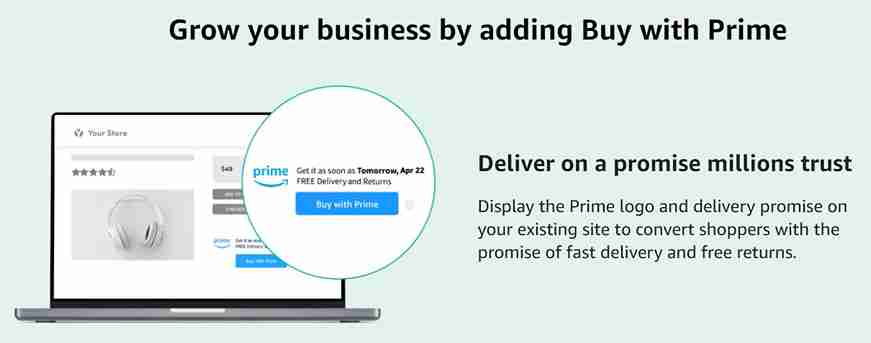
Source: buywithprime.amazon.com, 4/26/22
By bringing Amazon back into the mix, DTC sellers risk all of their hard work in developing a unique relationship with their customers. Fast and free shipping does boost conversion, so you may see a boost from new customers – but with Amazon’s logo doing the heavy lifting, you’re also giving customers the idea to head over to Amazon to price check and look at competitive offers.
Well over half of online product searches already start on Amazon. Do you really want to give shoppers the idea to pop over to the ecommerce giant after you’ve done all the hard work advertising to get them onto your site?
Pay Hefty Amazon Fees
In Q4 2021, Amazon made $30.3 billion from third-party seller services, which includes commissions, fulfillment, and shipping fees. While we don’t yet know the full fee structure of Buy with Prime, all indicators point to the company trying to turn this into the next Amazon Web Services. After all, in recent years Amazon has continued to lose money on its core retail business, while it makes up for it with huge profits from AWS and its advertising business.
AWS famously started as an internal service to run Amazon’s business before they productized it and started selling it to the world at large. Amazon FBA is now following the same exact path: it started as a way for Amazon to fulfill their own orders, then they extended it to third-party sellers, and now they’re expanding to DTC merchants. We anticipate that they’re targeting significant margins with this new business – perhaps they could even rival AWS’ 60%+ operating margin.
With this model, DTC merchants will feel the crunch in their own profitability. In exchange for increased conversion thanks to the Amazon Prime badge, they’ll realize lower margins. If the extra revenue doesn’t flow through to the bottom line, is the service worth it?
Looking for a New 3PL? Start with this Free RFP Template
Cut weeks off your selection process. Avoid pitfalls. Get the only 3PL RFP checklist built for ecommerce brands, absolutely free.
Get My Free 3PL RFPCompetes with Your FBA Inventory Limits
Finally, if you’re a multichannel seller trying to win on Amazon and on a DTC site, you don’t get two separate inventory limits. All of your FBA and Buy with Prime inventory goes into one pool, and where an order is placed doesn’t make a difference.
While this is helpful in its simplicity, it’s a big potential challenge because Amazon is notorious for imposing too-strict FBA inventory limits and for long receiving delays. With all of your eggs in the FBA basket, you make yourself extremely vulnerable to a self-serving change in inventory limits or one of FBA’s routine weeks or months-long receiving delays.

The best fulfillment practice for Amazon-only sellers is to have an FBA alternative for the many times when FBA falls flat, and that will be doubly true for Buy with Prime users. If you’re selling on Amazon and on a DTC site, and a receiving delay knocks your best seller out of stock, that now doesn’t just kill your Amazon sales rank – it also kills your DTC store’s SEO and paid advertising efforts!
Though Amazon is positioning Buy with Prime as a holistic solution for DTC sellers, we assert that relying wholly on Amazon FBA would be a fatal mistake for your business.
The Buy with Amazon Prime Alternative: Cahoot
Cahoot has created a robust
If Buy with Prime’s promise of a simple multi-channel answer to fulfillment appeals to you, contact us in addition to sending in your application to Amazon.
Cahoot is the next generation of tech-enabled fulfillment networks. Unlike other networks that are collections of 3PLs, Cahoot’s innovative approach empowers merchants across the country to fulfill orders for one another. Our peer-to-peer network is a collective of highly vetted eCommerce retailers who offer up excess warehouse space and resources to provide high-quality order fulfillment to other merchants. Since they fulfill their own DTC orders, they know how important top-notch fulfillment is, and they put the same care and energy into your orders as they do for their own.
As a result, costs are typically lower than what you get with a traditional 3PL fulfillment company, yet service levels are higher. With a P2P network, multi-channel fulfillment with nationwide 1-day and 2-day delivery at economy shipping rates is the norm. Merchants can use the network solely for outsourced fulfillment – similar to FBA, or they can choose to fulfill orders for other merchants and offset some of their own outsourced fulfillment costs.

Turn Returns Into New Revenue

